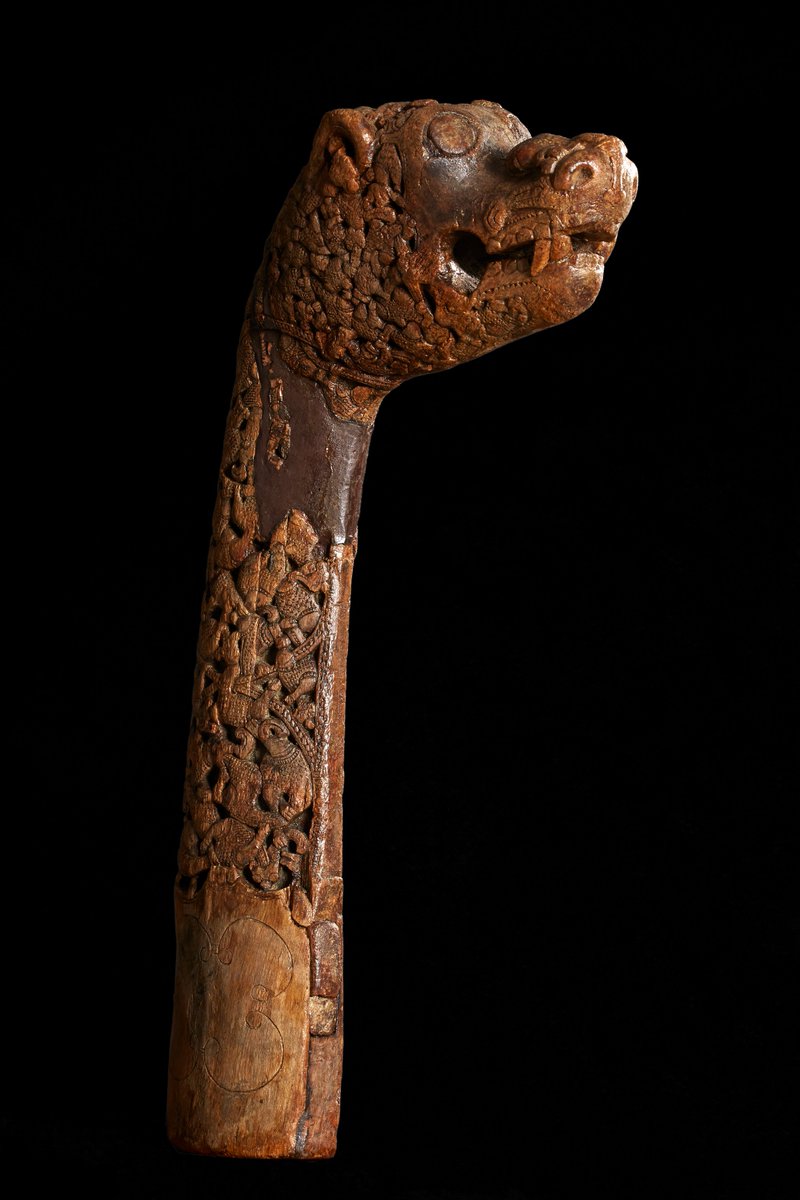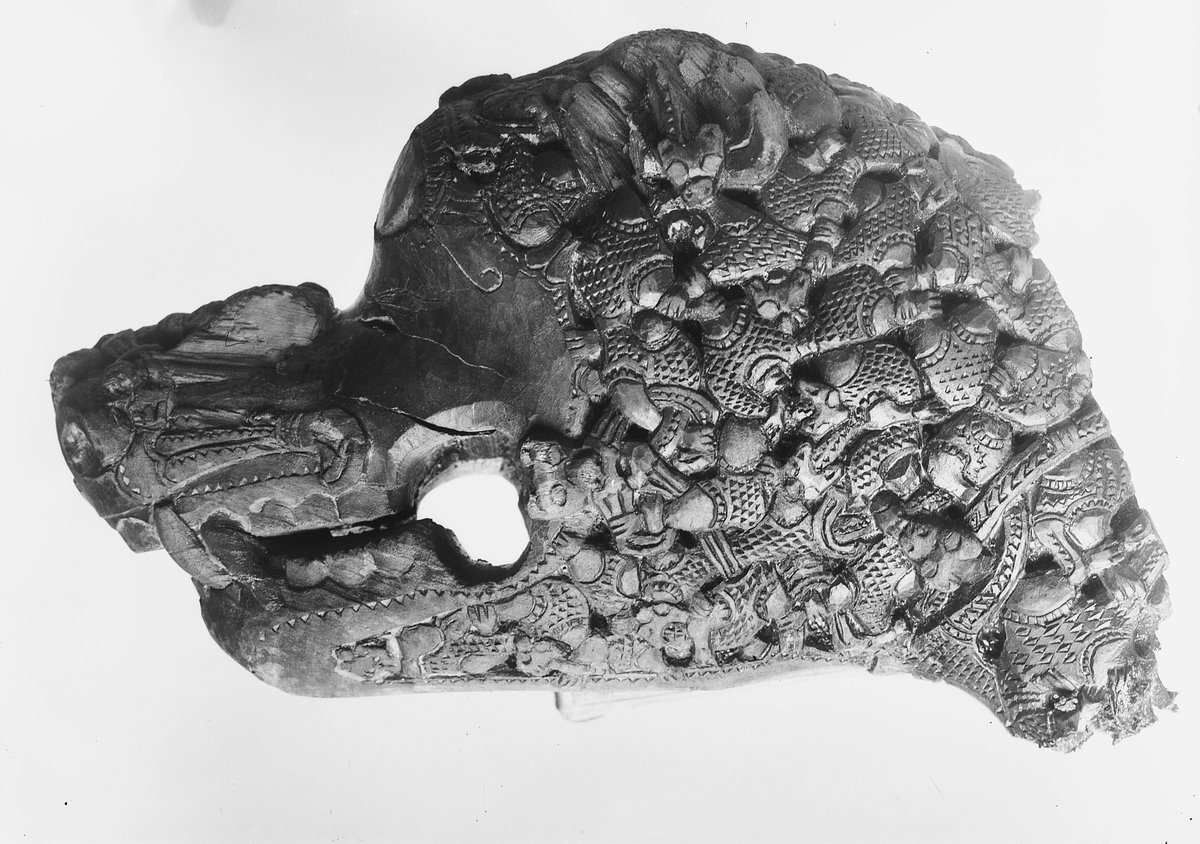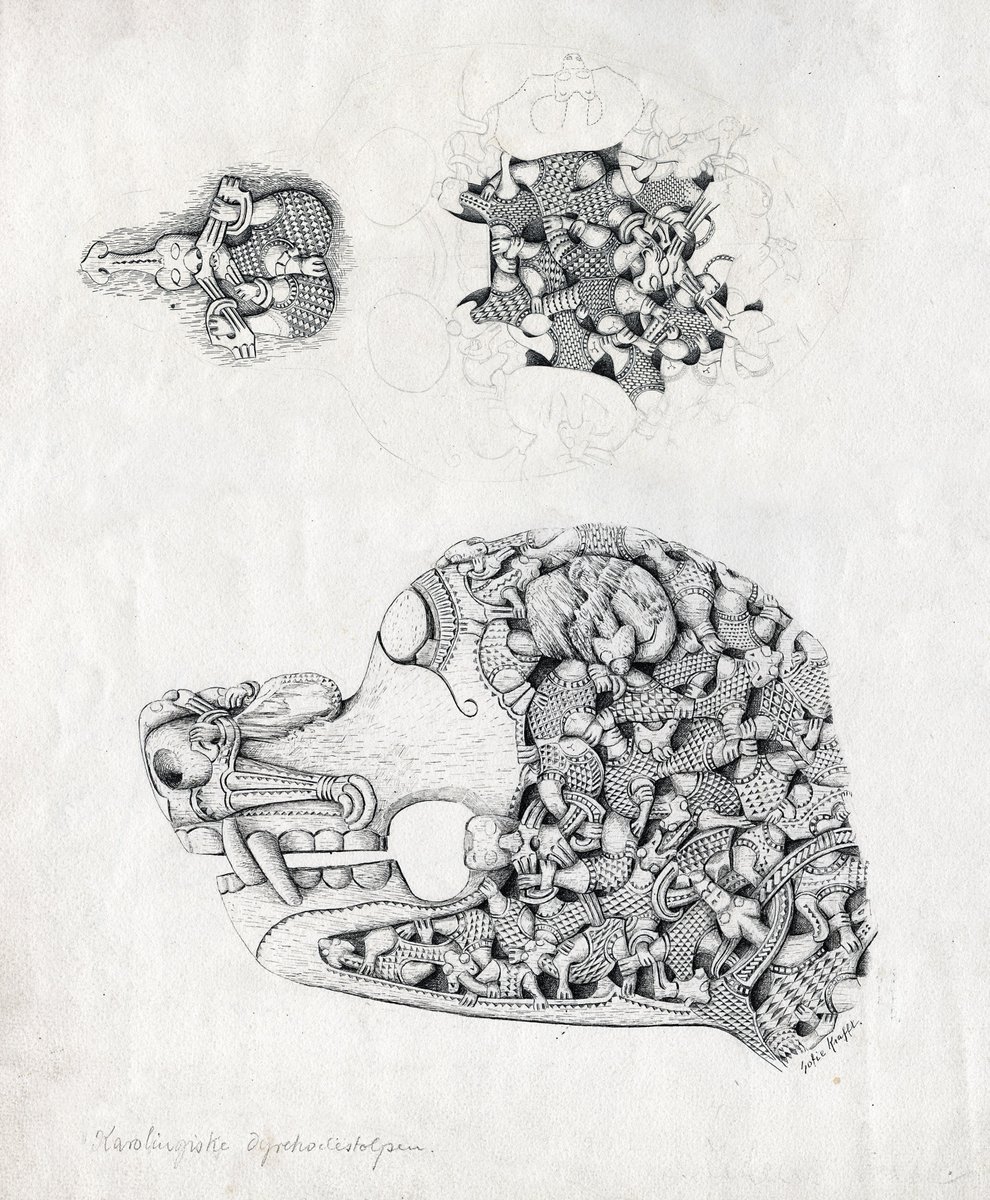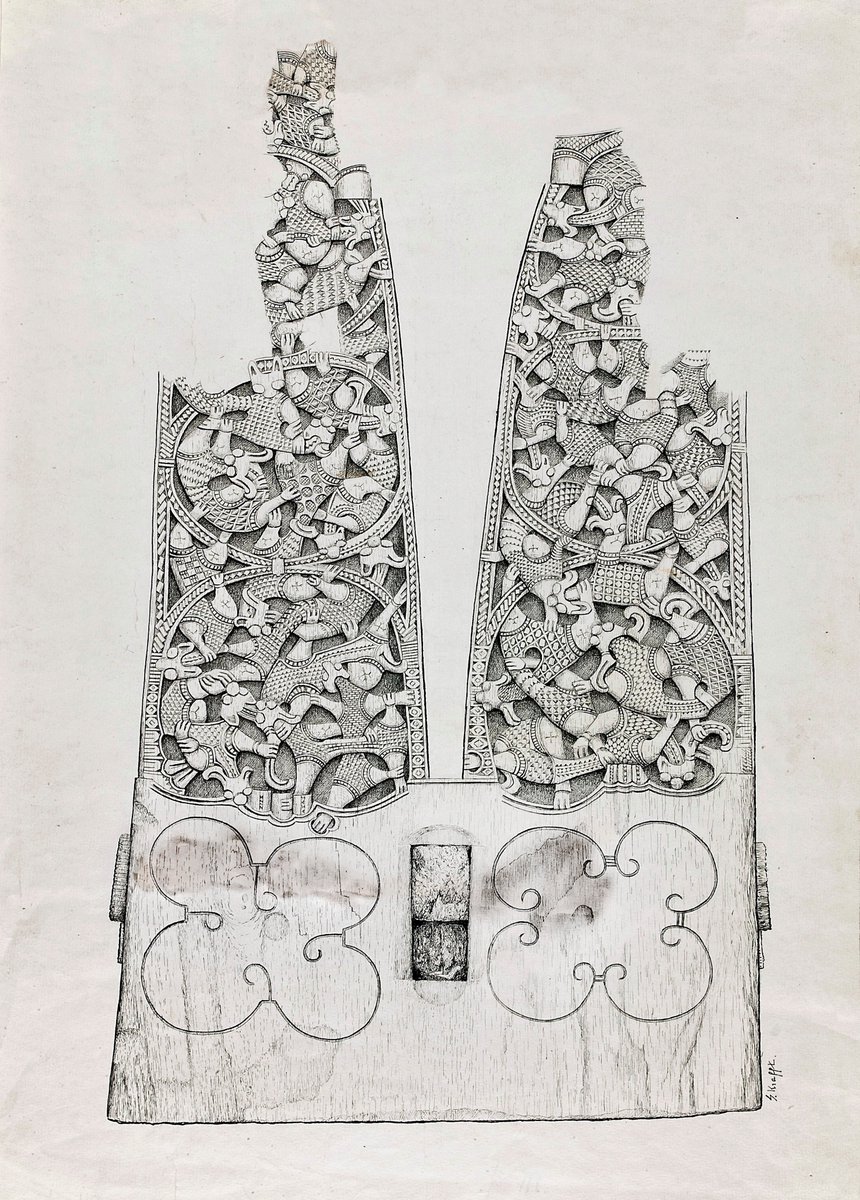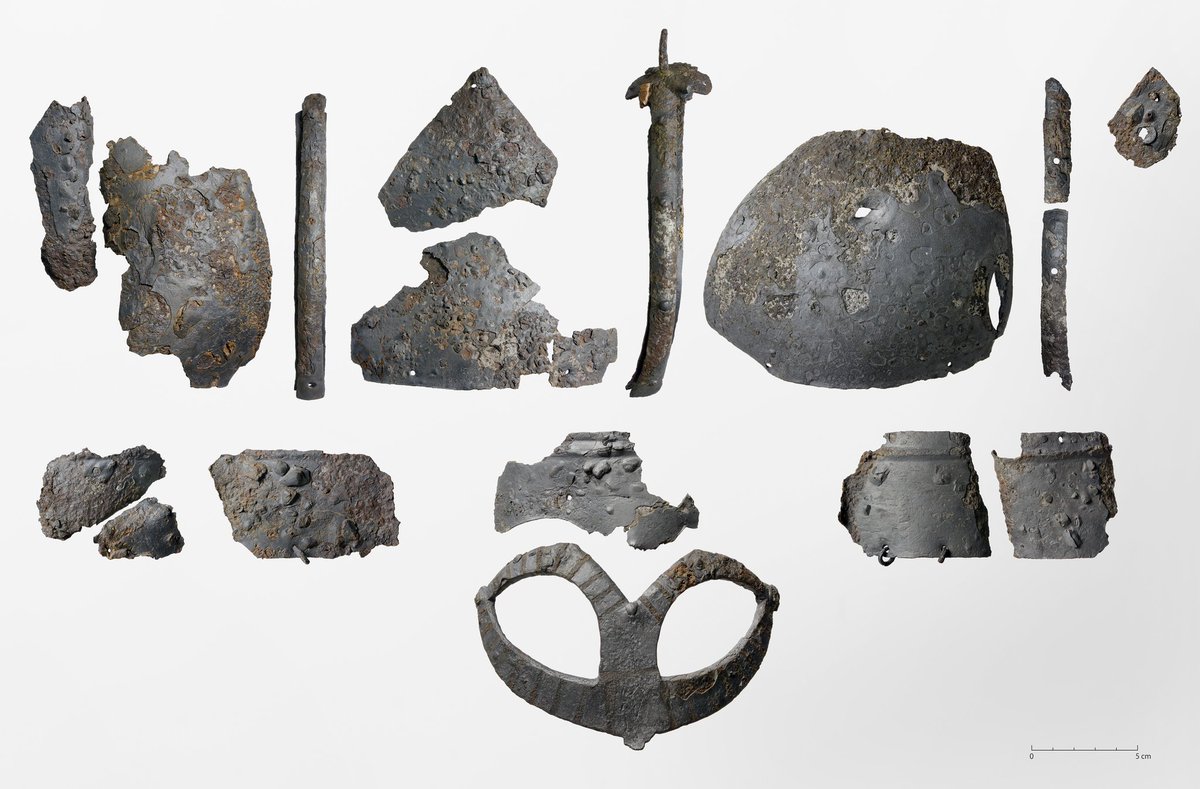
This thread is a story about 'The Beasts of Oseberg'- five exquisitely carved and mysterious #Viking Age objects @kulturhistorisk
Photo: Kirsten Helgeland
Photo: Kirsten Helgeland
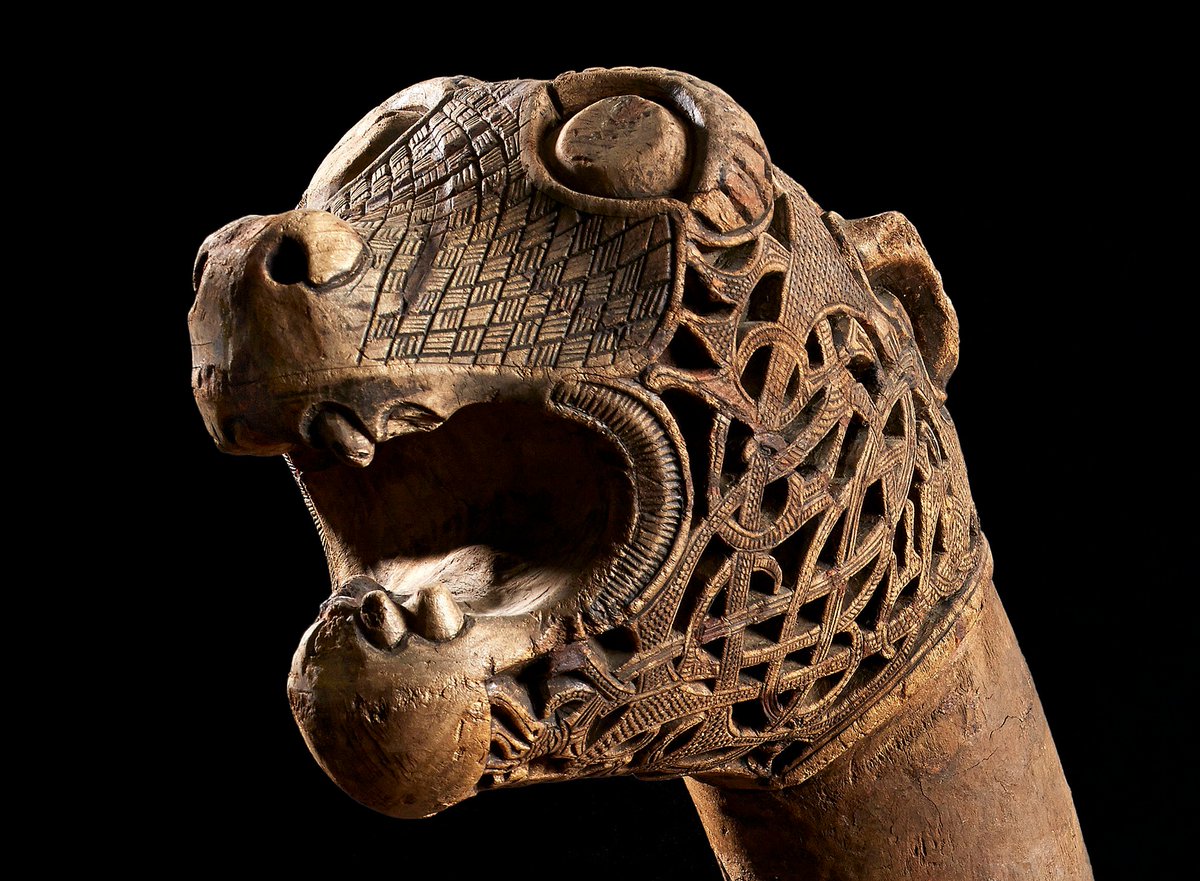
@Kulturhistorisk Many will have seen pictures of these animal heads found in the ship burial of Oseberg, AD 834. The heads where originally five in number: The Academic, The Lions head, The Carolingian and The Baroque head no.1 and no.2.
Photo: Kirsten Helgeland
Photo: Kirsten Helgeland
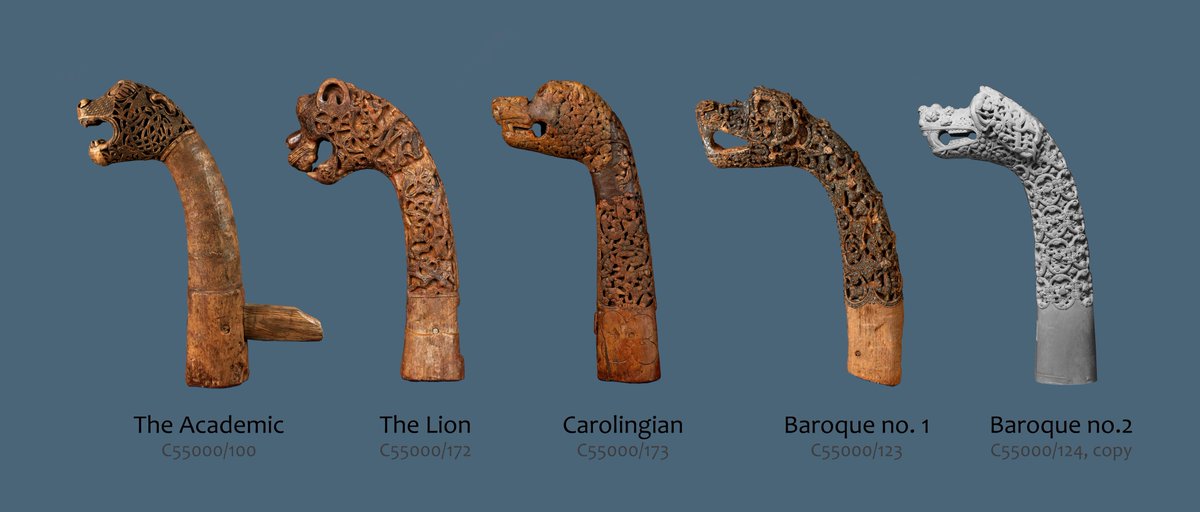
@Kulturhistorisk Each head is about 50 cm in length. A straight handle (50-75cm) was attached near the base. If held by the handle only it would be possible but not easy to balance the head upright. Besides the handle the heads are not parts of a vehicle or furniture. Their use seem inscrutable. 



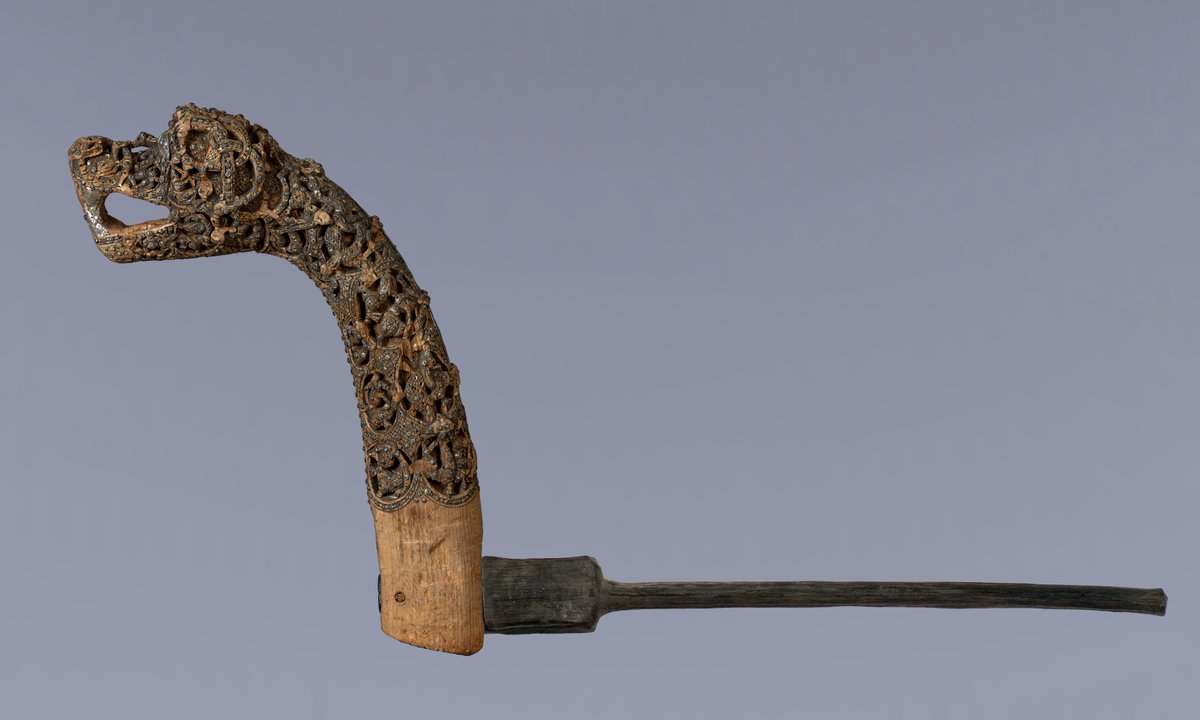
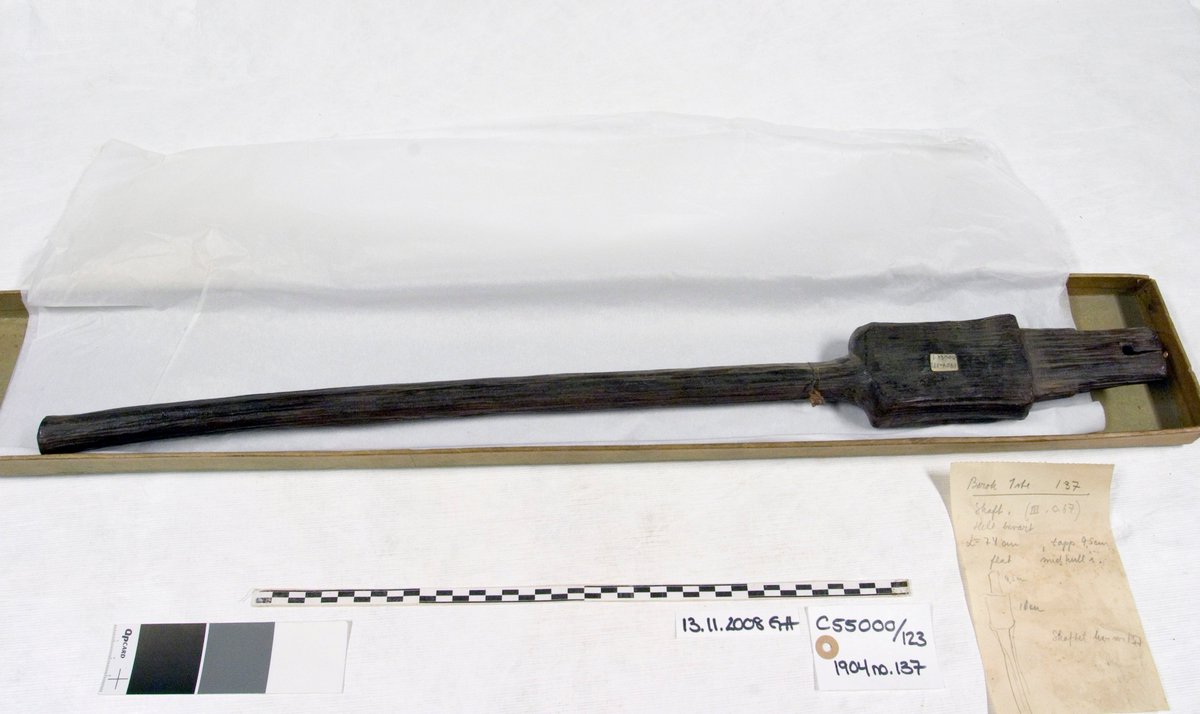
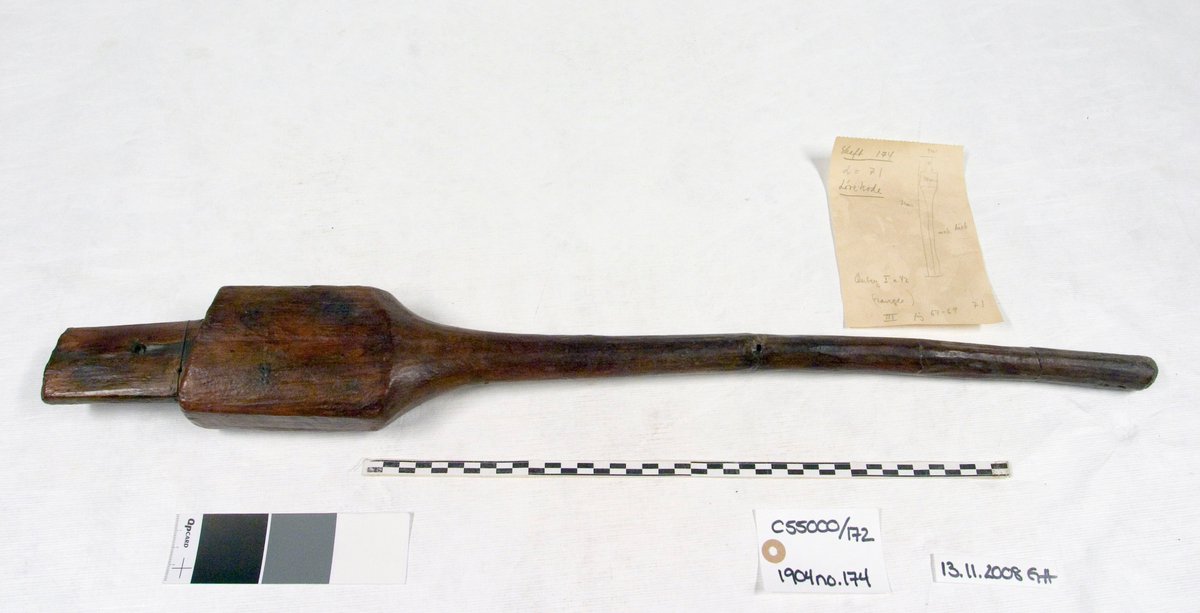
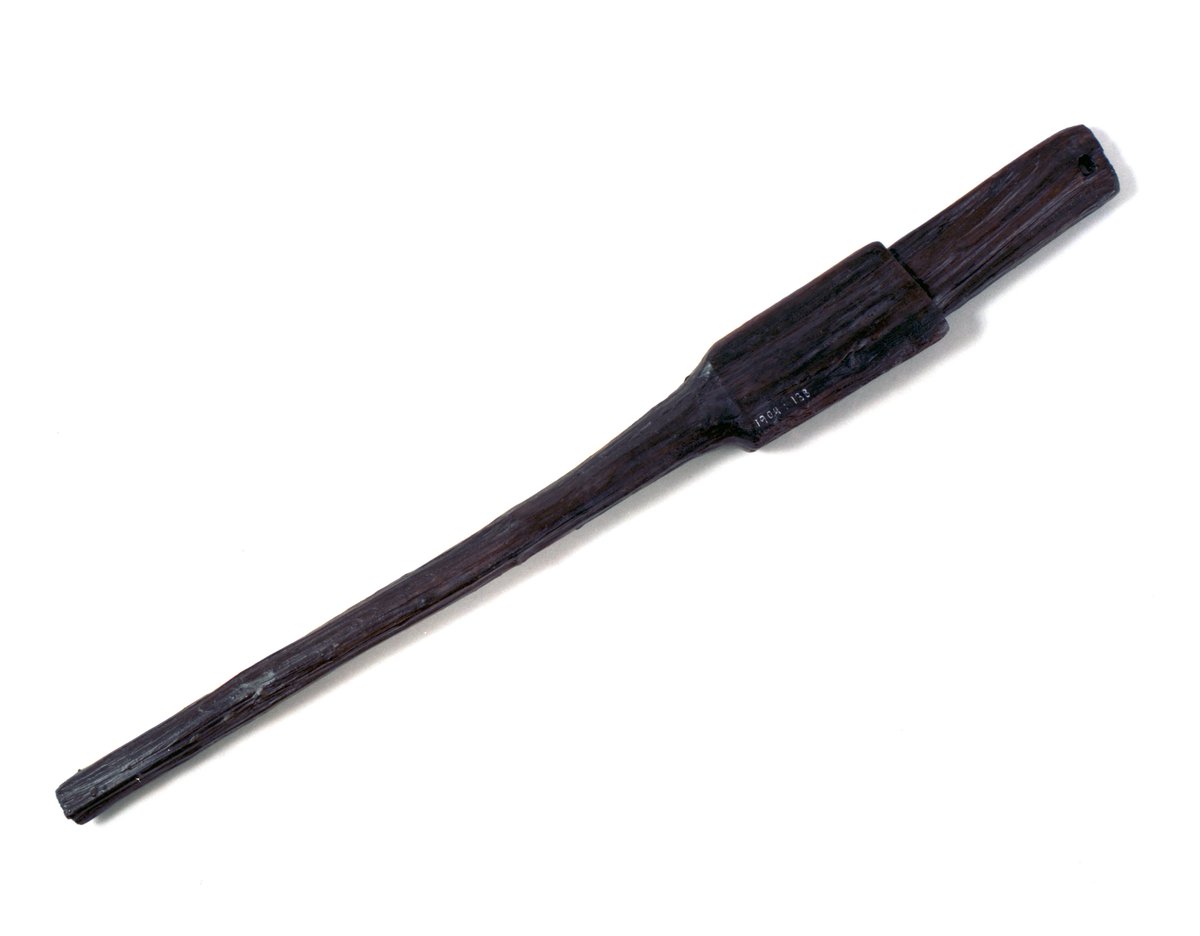
@Kulturhistorisk The animal head posts can be compared to some other animal heads found in the same grave. They are somewhat similar to those mounted at the corners of the three ornate sleighs from Oseberg. Photo: Eirik Irgens Johnsen, Ove Holst and others 



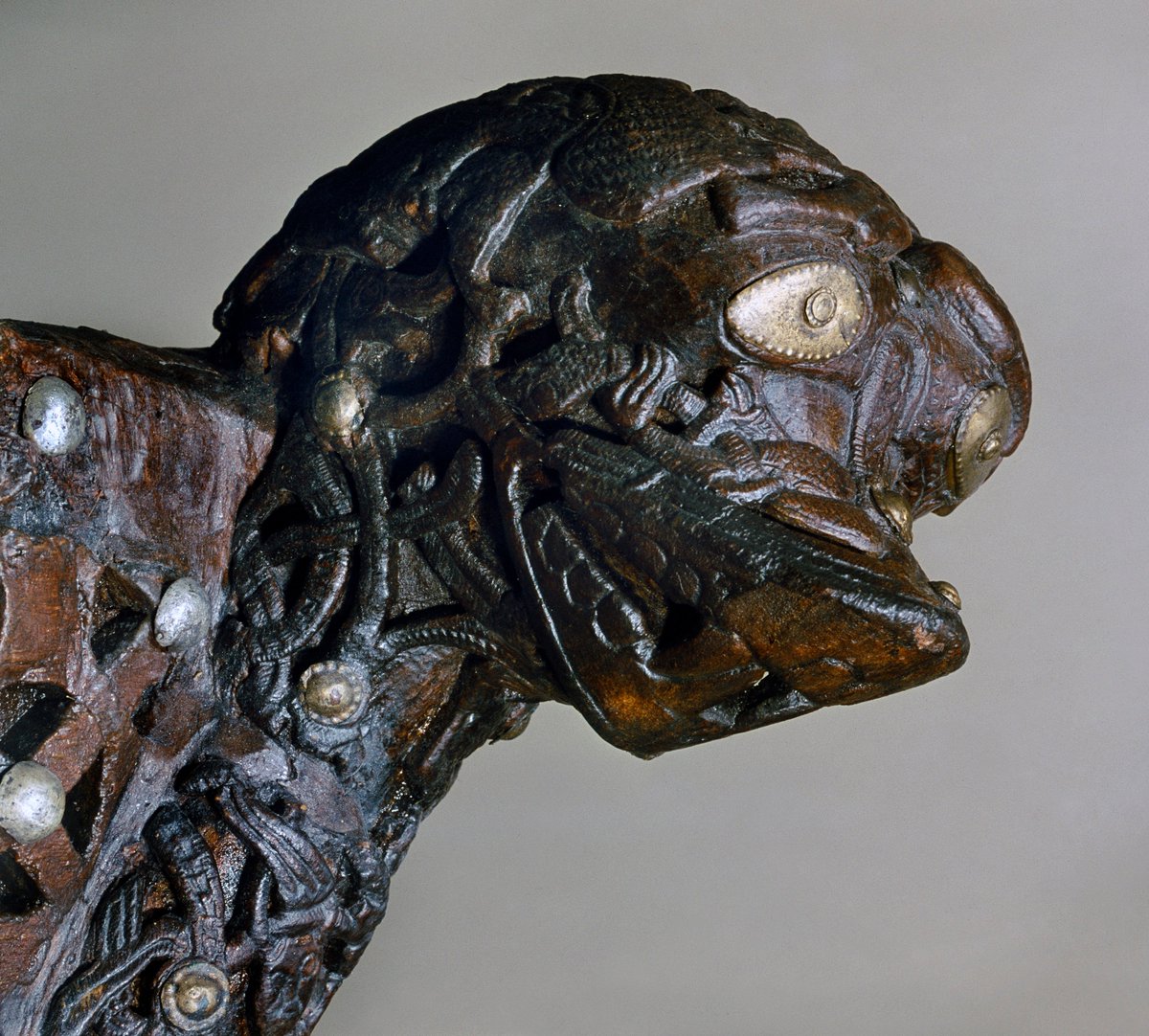
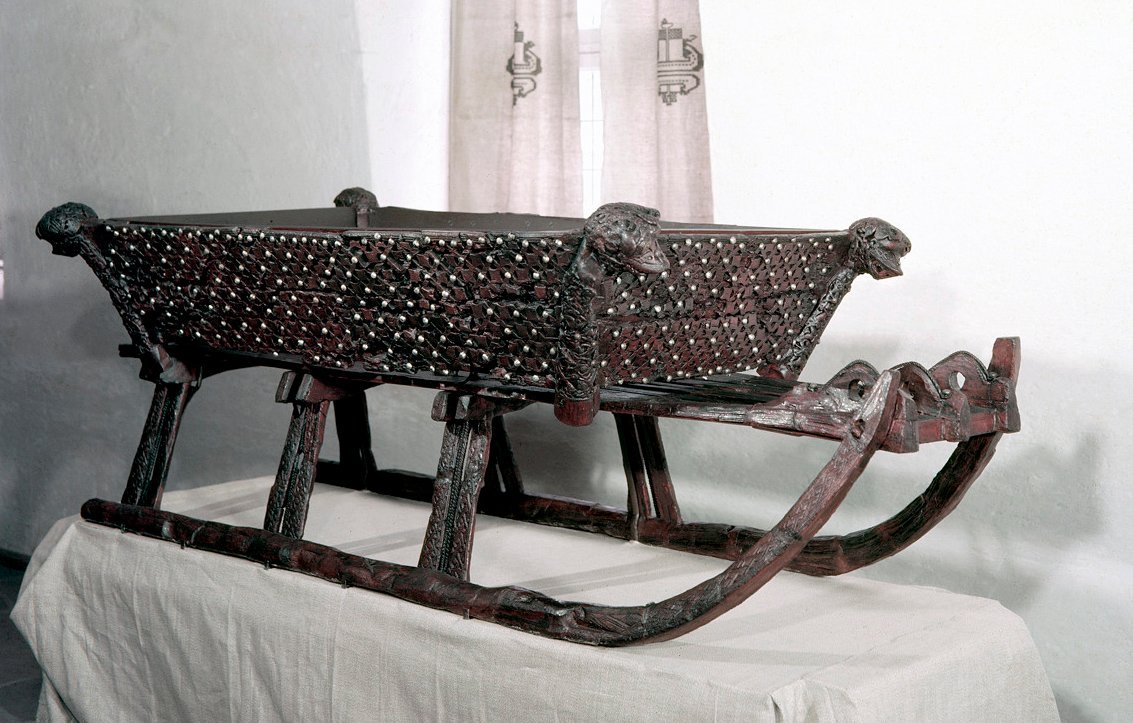
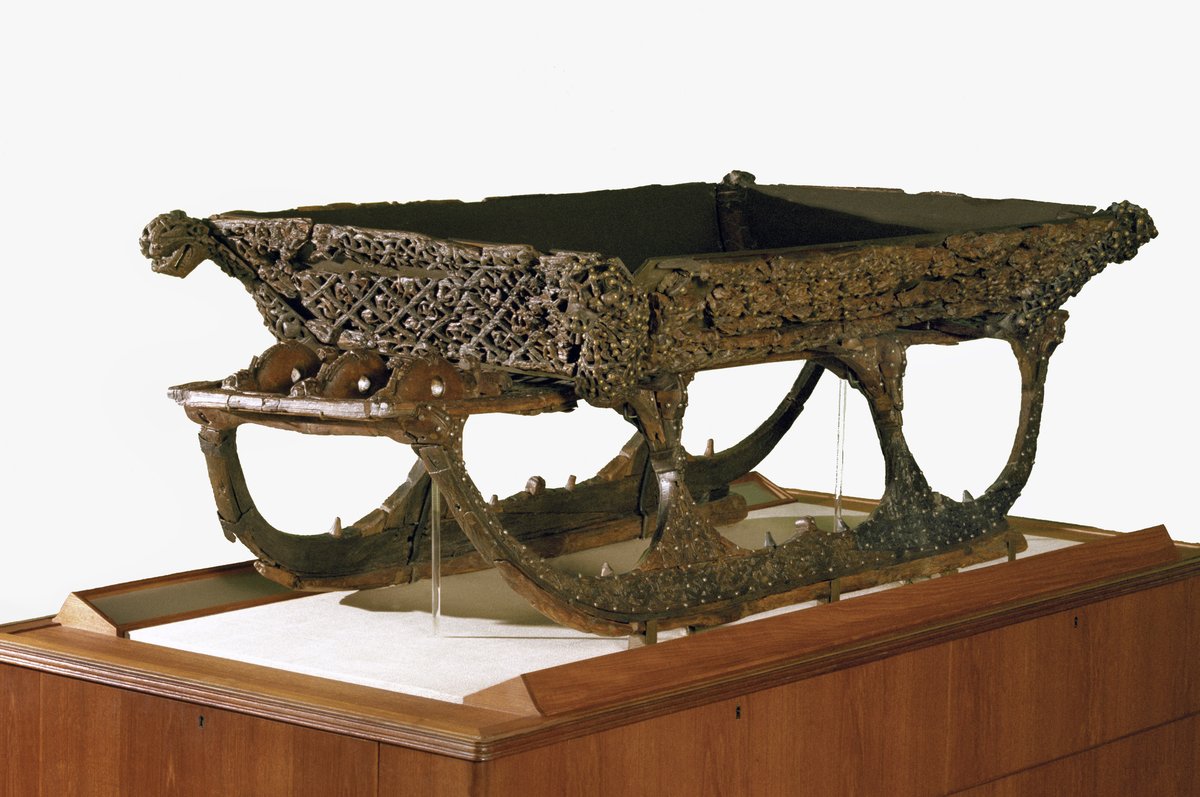
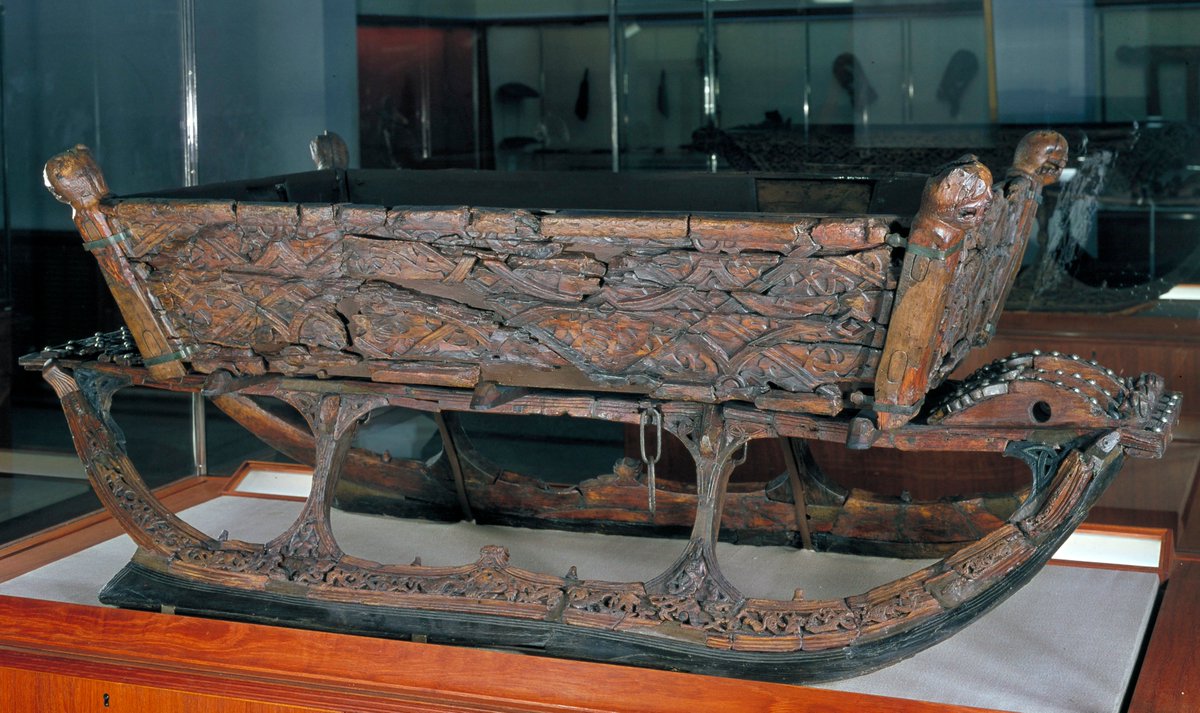
@Kulturhistorisk Drying out the wooden objects from Oseberg after the excavations they soon discovered that hardwoods other than oak & ash shrank, split & collapsed. To prevent this they submerged the objects in a hot bath saturated with alum salt.
khm.uio.no/english/resear…
khm.uio.no/english/resear…
@Kulturhistorisk The Academic - C55000/100
unimus.no/foto/#/search?…
The Lions head - C55000/172
unimus.no/foto/#/search?…
The Carolingian - C55000/173
unimus.no/foto/#/search?…
The Baroque head no.1 - C55000/123
unimus.no/foto/#/search?…
The Baroque head no.2 - C55000/124
unimus.no/foto/#/search?…
unimus.no/foto/#/search?…
The Lions head - C55000/172
unimus.no/foto/#/search?…
The Carolingian - C55000/173
unimus.no/foto/#/search?…
The Baroque head no.1 - C55000/123
unimus.no/foto/#/search?…
The Baroque head no.2 - C55000/124
unimus.no/foto/#/search?…
@Kulturhistorisk They tried the alum salt treatment on The Carolingian head and it did not turn out all that well. The details of the ornaments became muddled and washed out. 
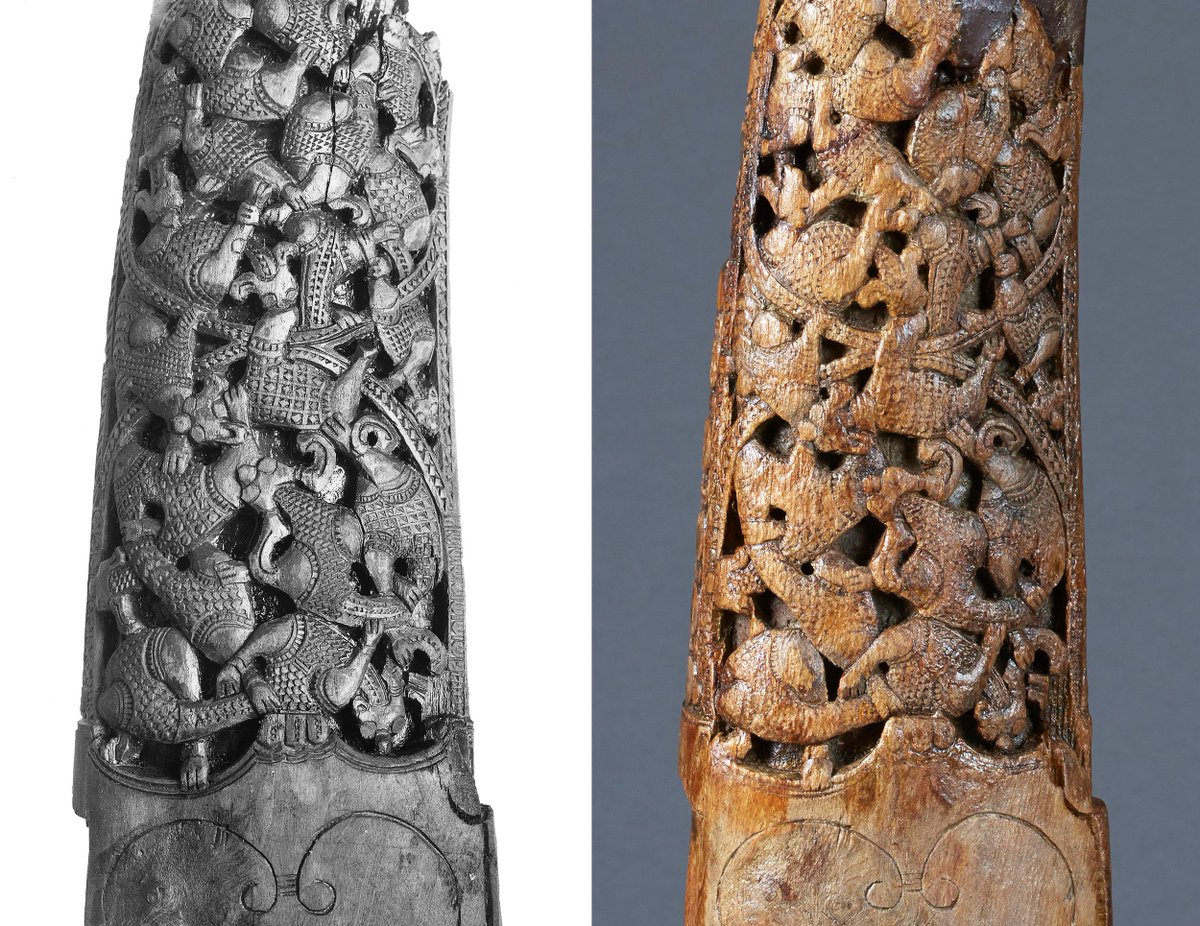
@Kulturhistorisk The animal head posts displayed some of the best wood carving found in the Oseberg grave. An acceptable treatment that would retained all these carved details was lacking and thus the remaining heads came to be displayed and preserved in tanks of water for half a century. 

@Kulturhistorisk Due to the lack of diligence during the Second World War one of water tanks sprung a leak. The head inside dried out and shriveled to pieces. This head was called 'The Baroque Master's second'. Fortunately a copy had been made.
unimus.no/foto/#/search?…


unimus.no/foto/#/search?…
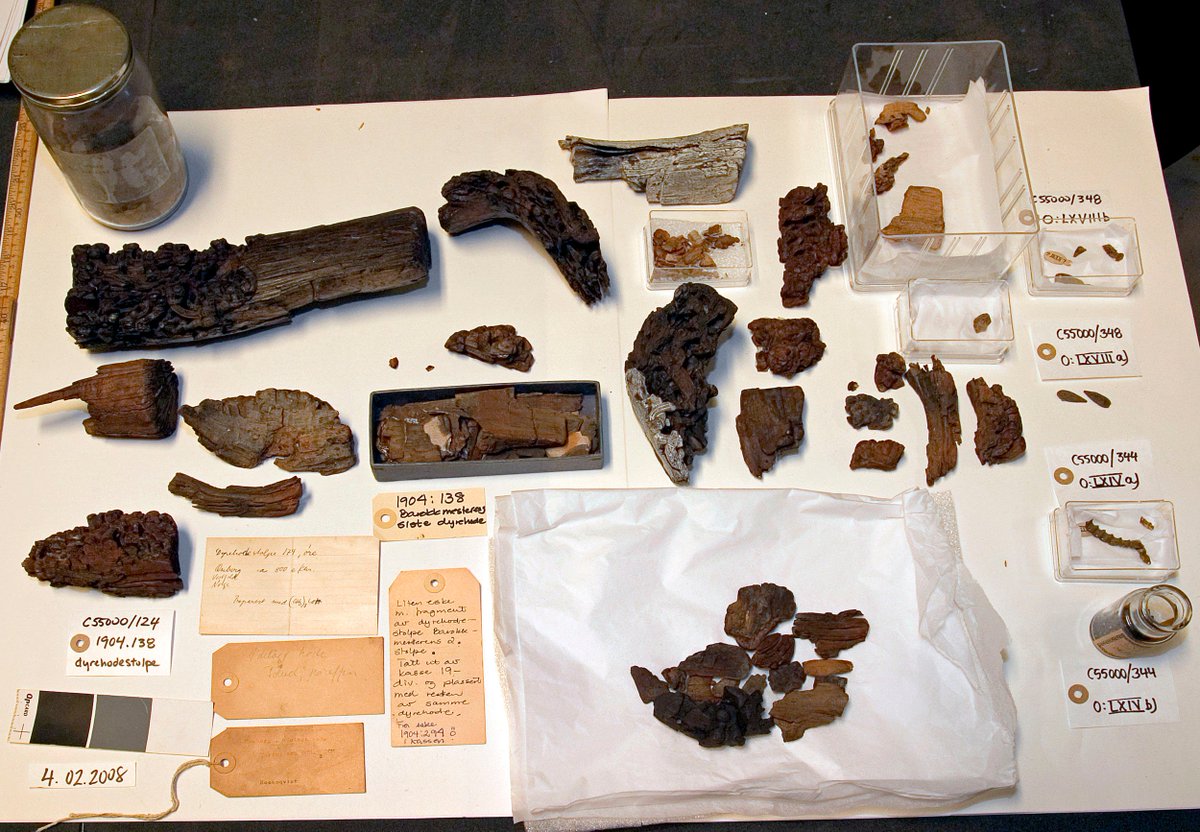
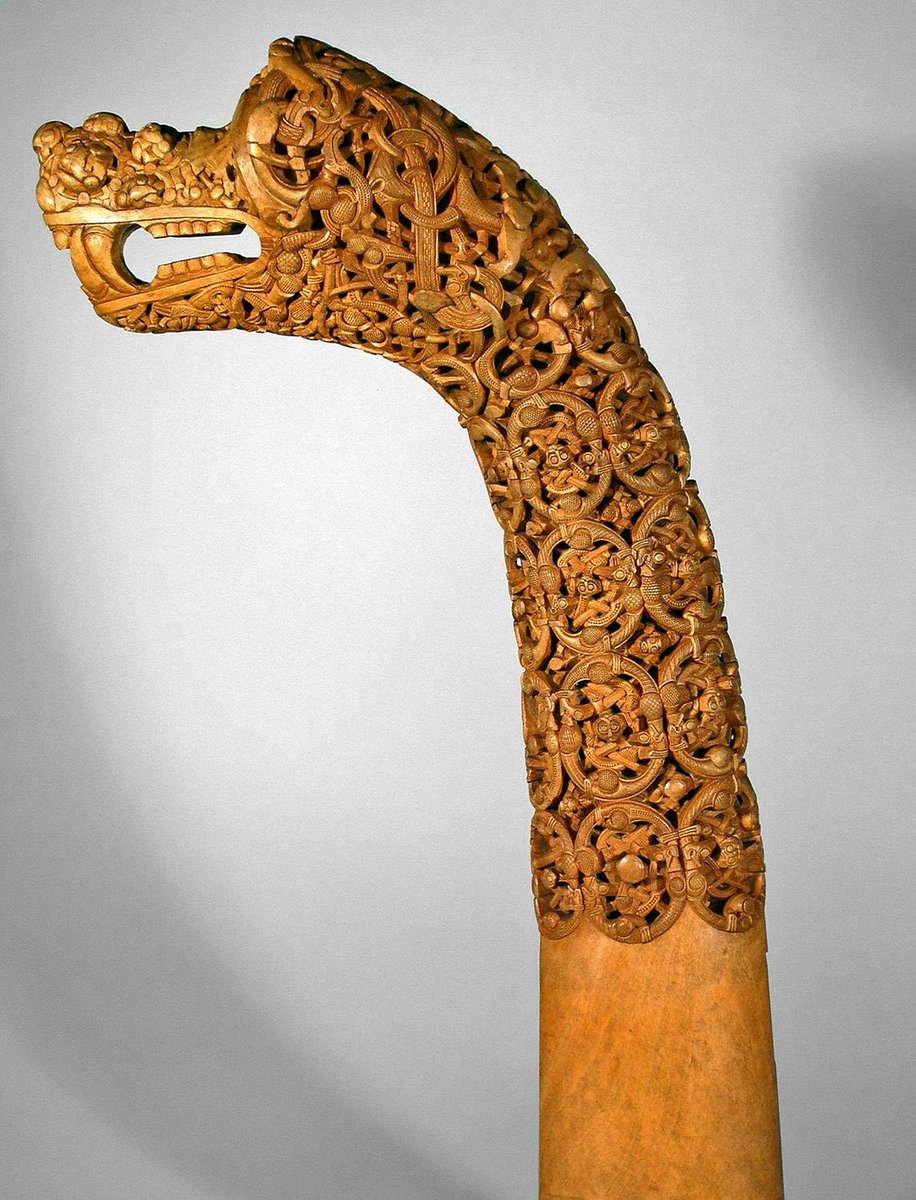
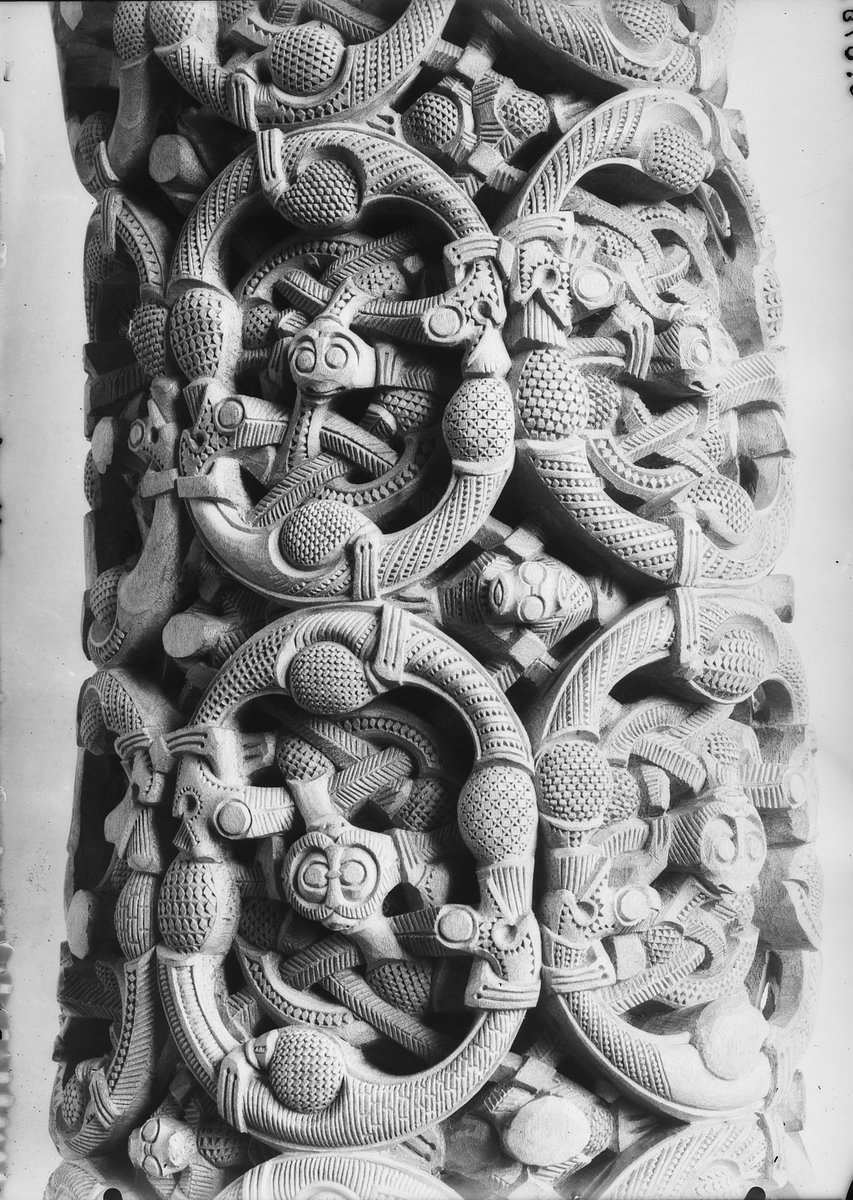
@Kulturhistorisk The Baroque Master's second head had carvings of the most exquisite quality, with ornamentation carved at multiple levels of depth. These old pictures display some of it's splendor before the head dried out and was destroyed. 


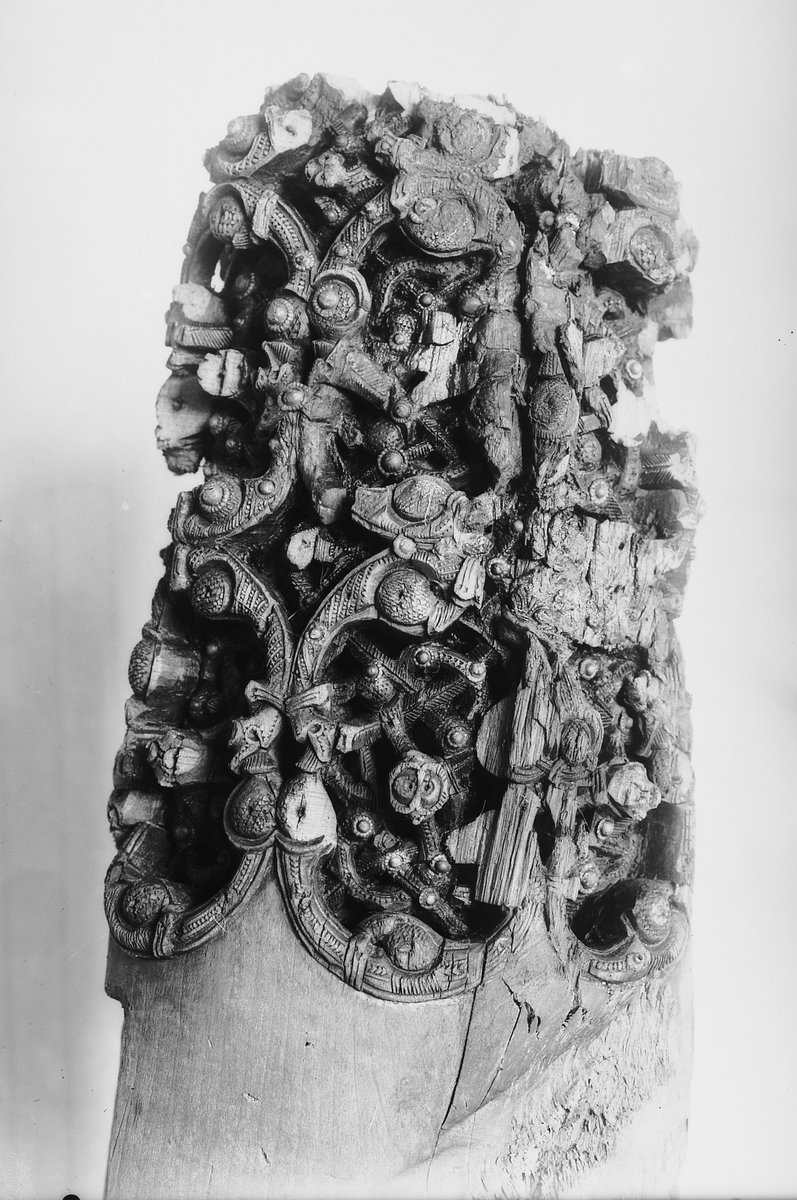
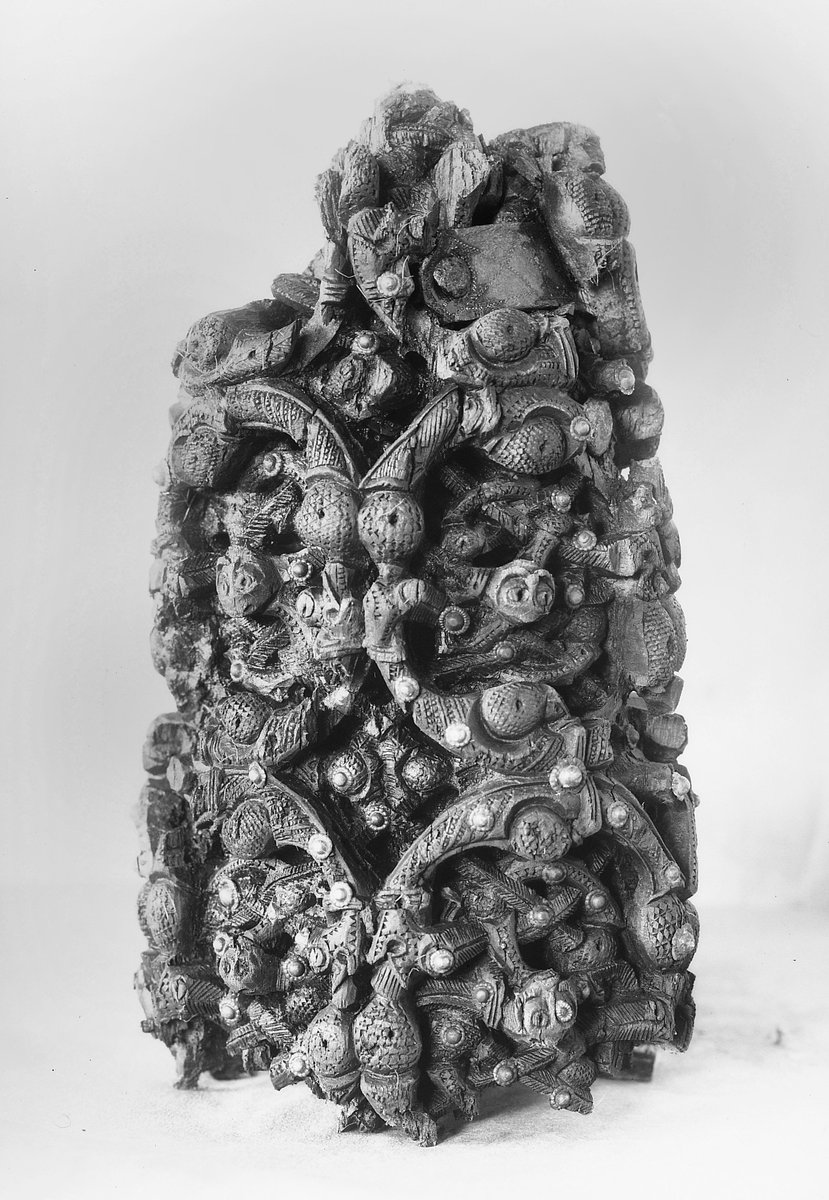
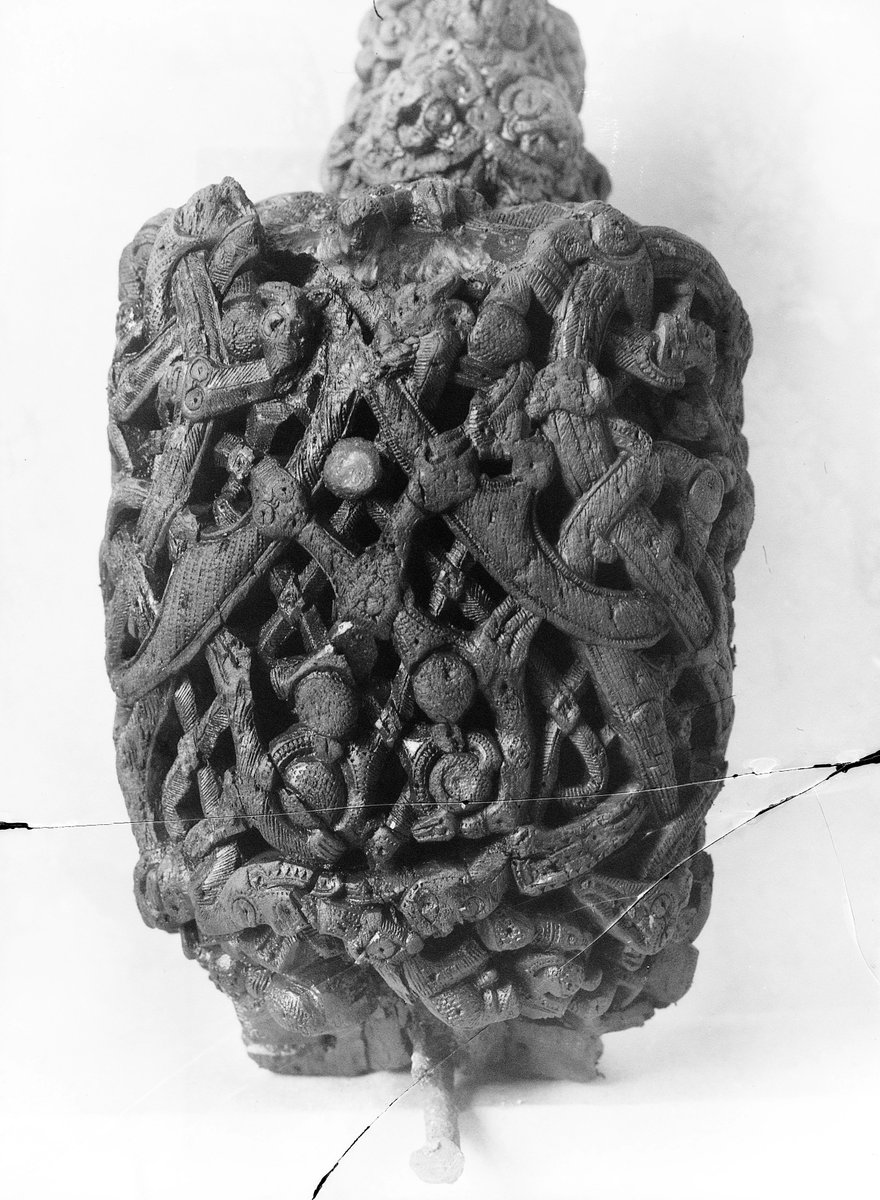
@Kulturhistorisk In the 1950's a sufficiently advanced #conservation method had been developed to successfully preserve the four remaining animal head posts. This was a vacuum drying technique, a predecessor to the freeze drying method used today.
khm.uio.no/english/resear…
khm.uio.no/english/resear…
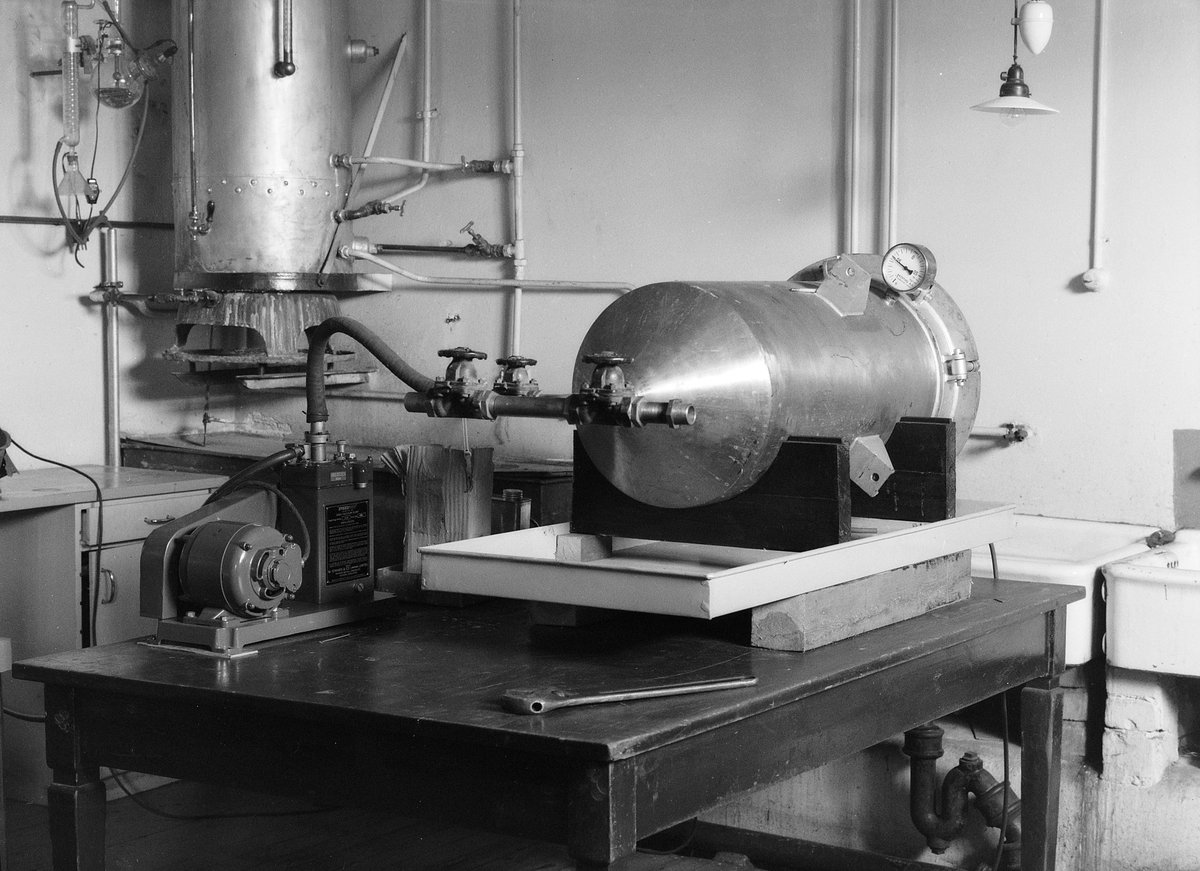
@Kulturhistorisk 'The Lions head' was humorously dubbed 'the animal with a head cold' because of the gauze wrapping its nose during treatment. In the picture we can see Anna Rosenqvist, the chemist and #conservation scientist who vacuum dried the heads during the 1950's.
unimus.no/foto/#/search?…


unimus.no/foto/#/search?…
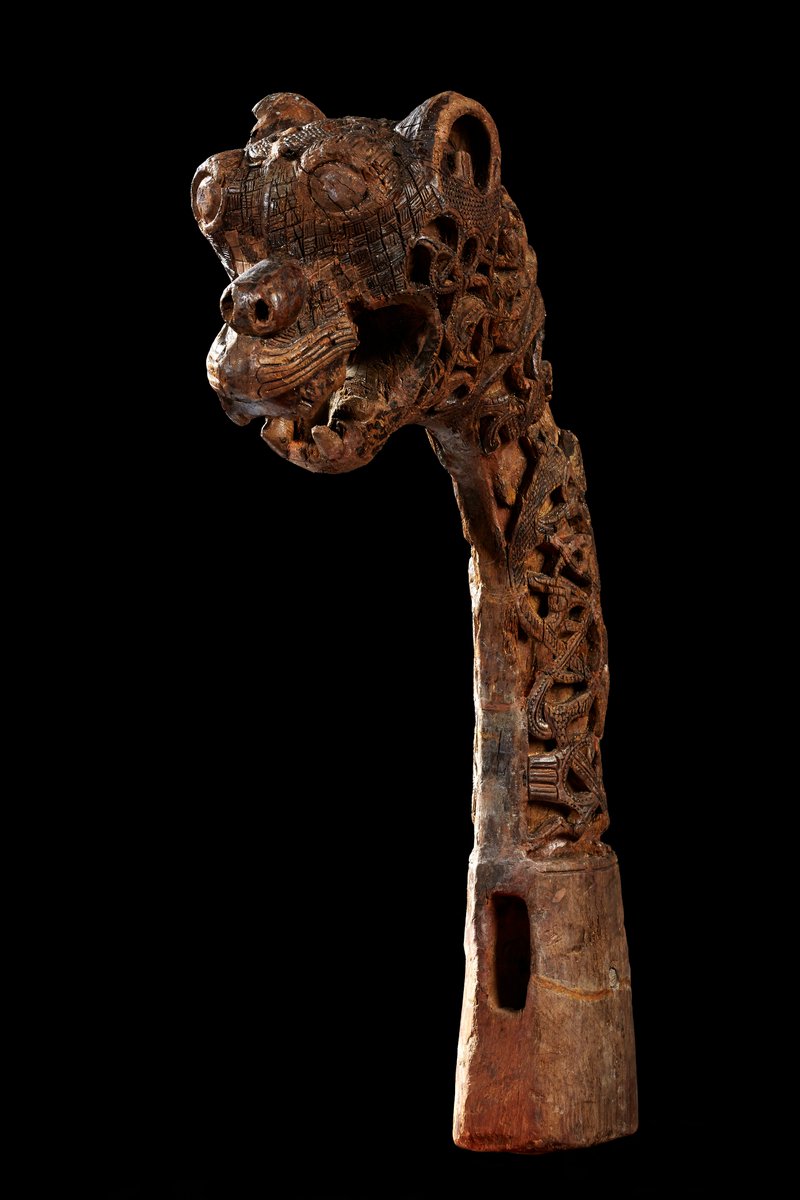
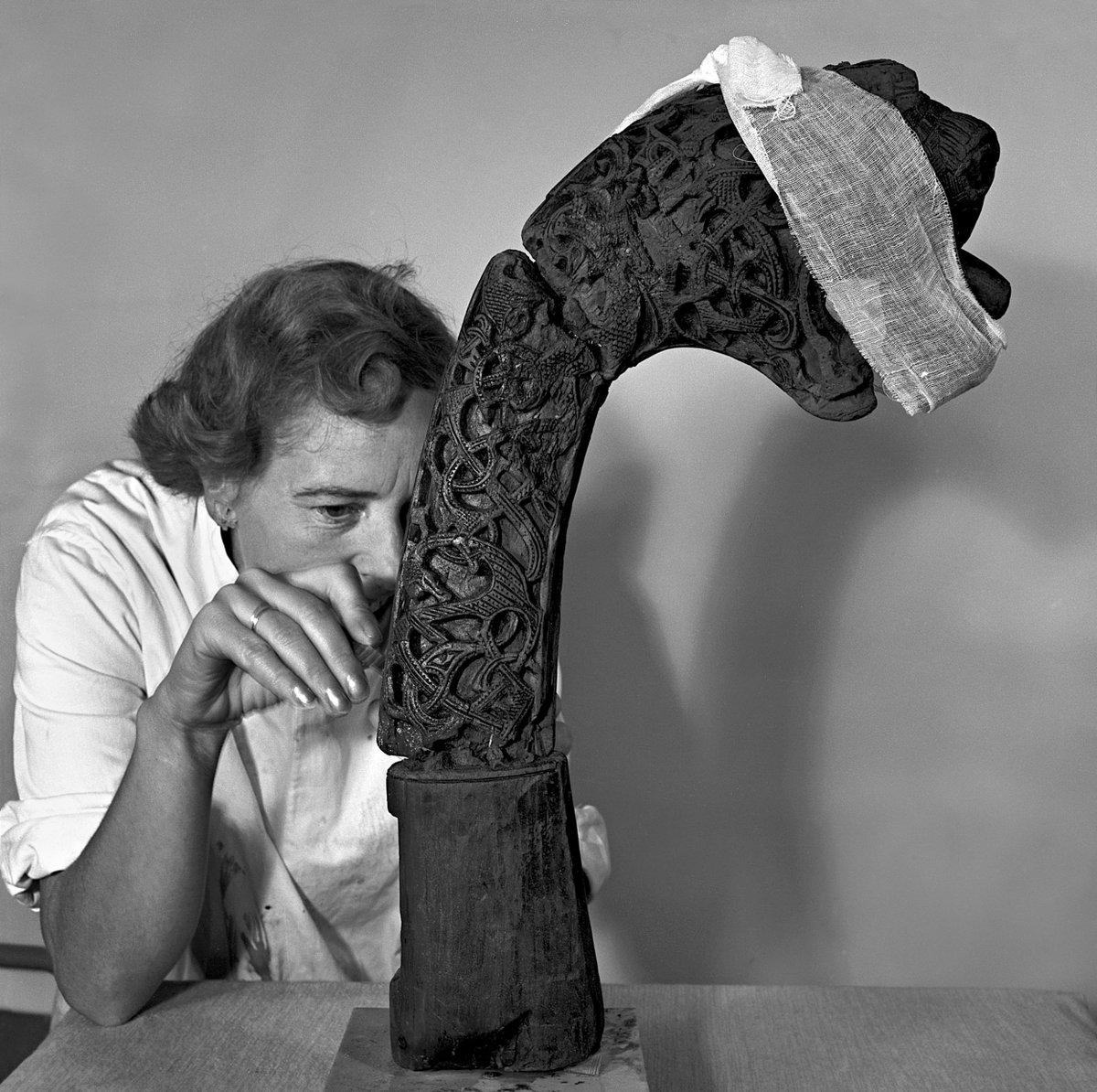
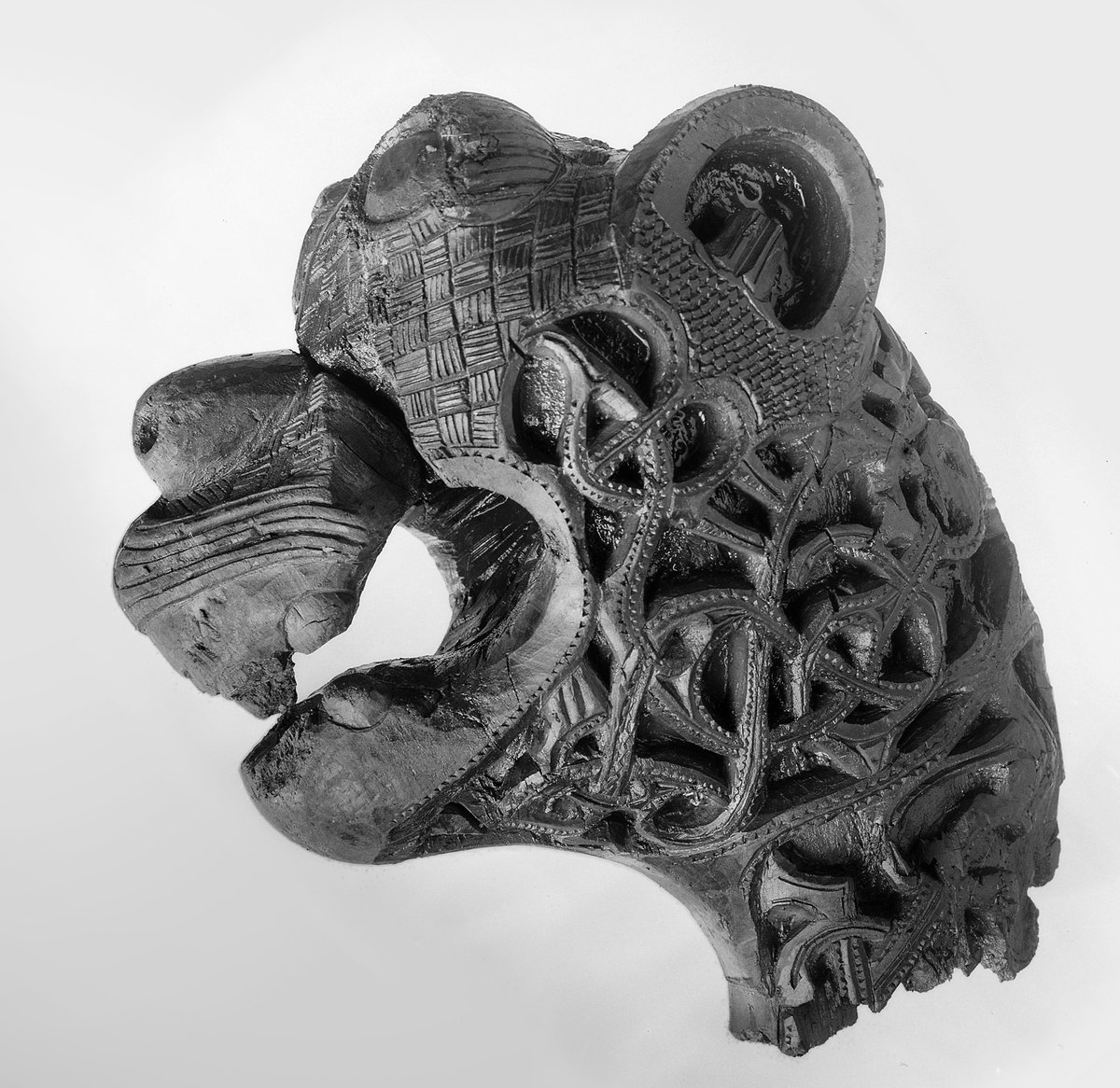
@Kulturhistorisk 'The Baroque Master's first' head is similar to the one that got destroyed - probably made by the same hand. Lavish carvings however does not seem to have been enough. Both the Baroque heads are also studded with a superfluous amount of decorative nails.
unimus.no/foto/#/search?…)


unimus.no/foto/#/search?…)
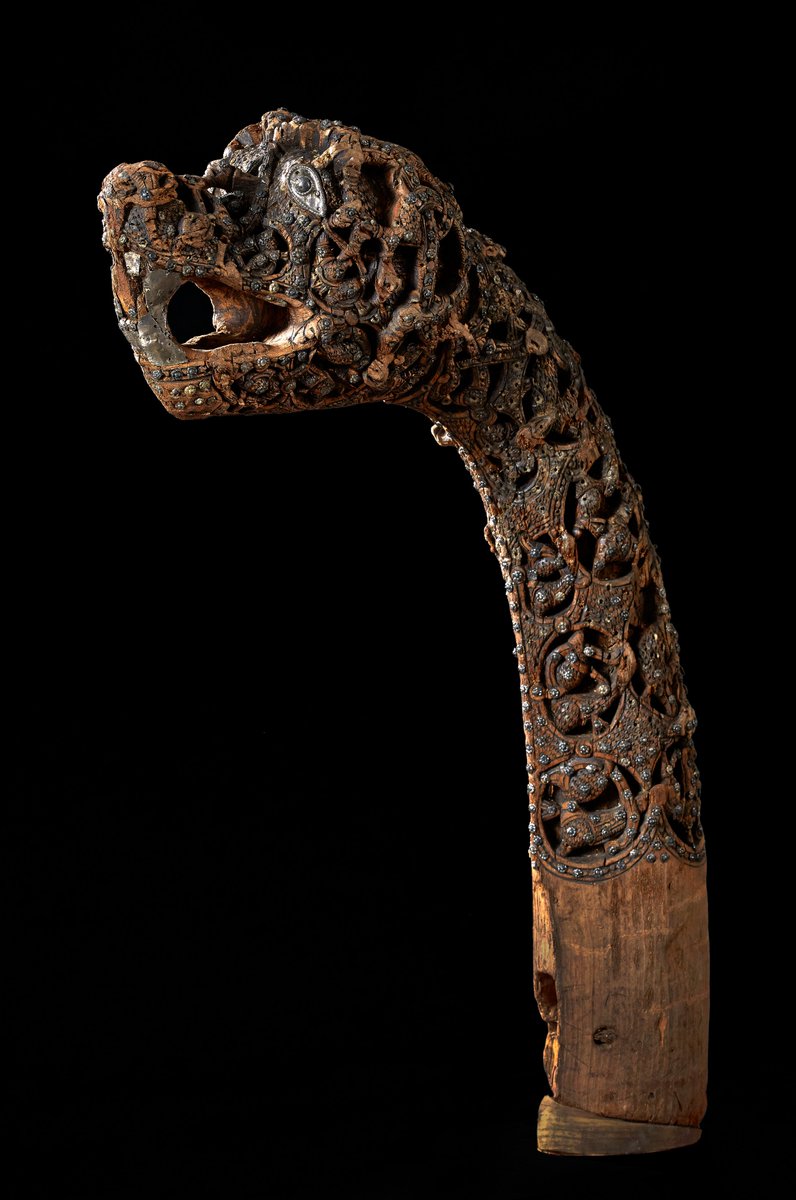
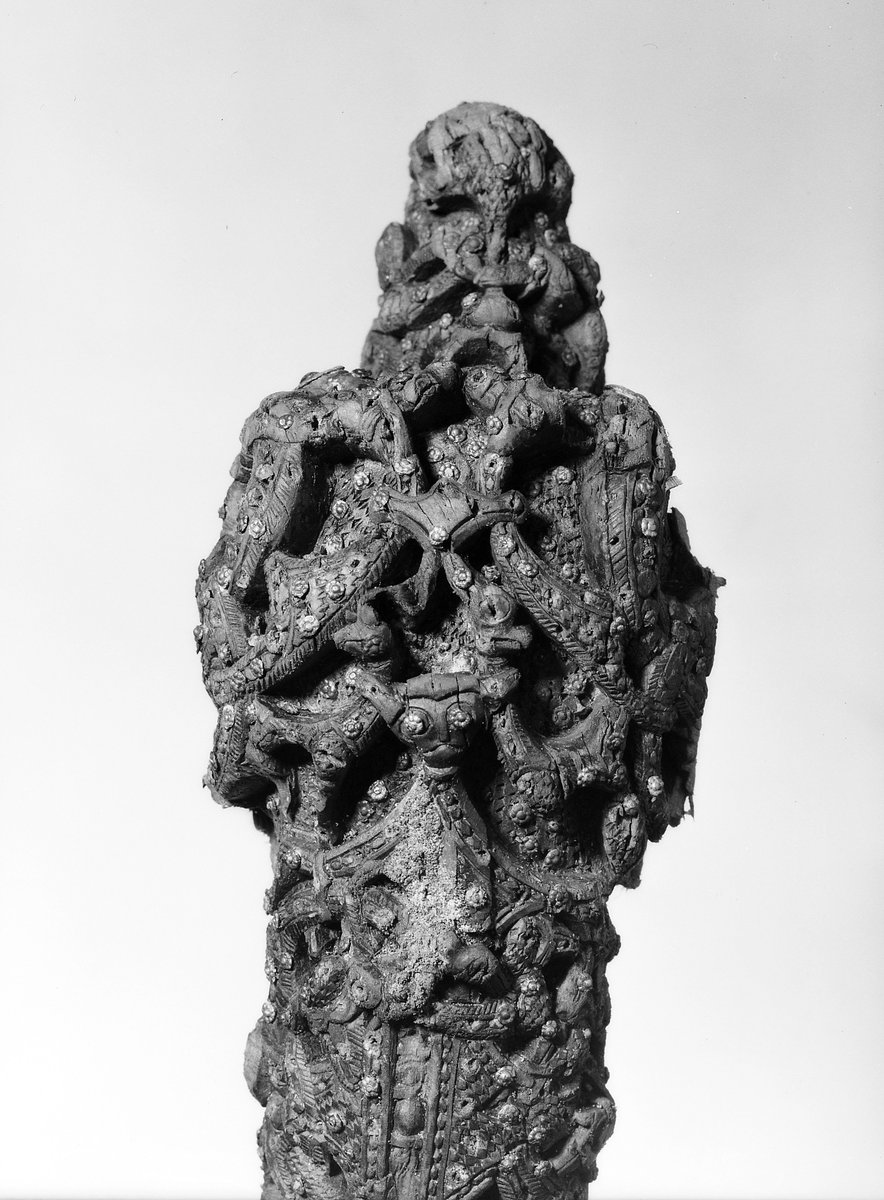
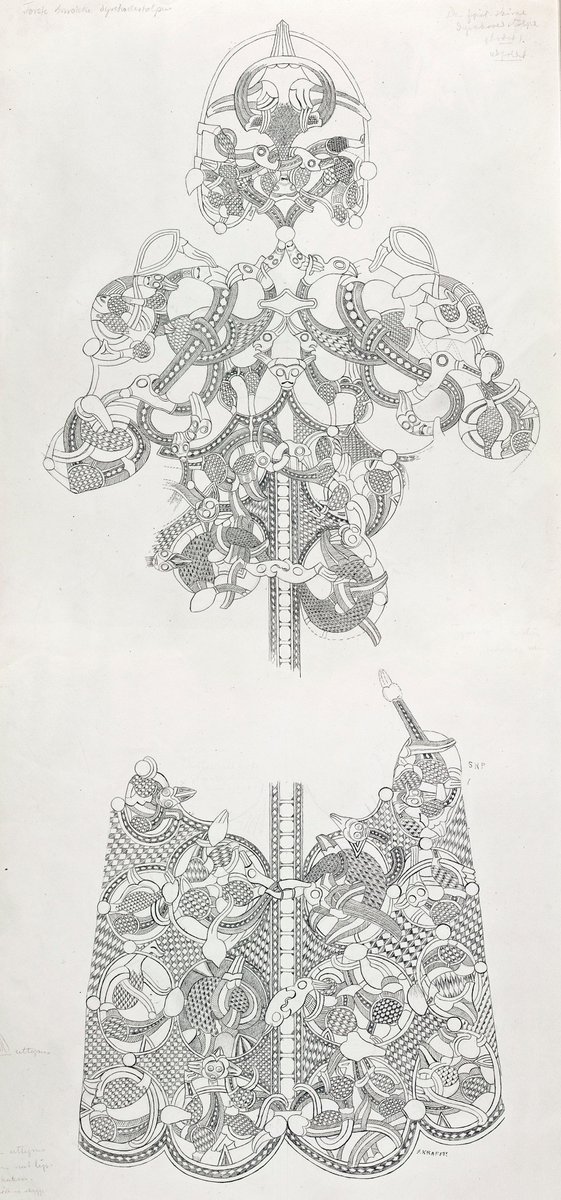
@Kulturhistorisk The two Baroque heads where found intertwined in one of the corners of the burial chamber, seemingly abandoned there at some point after the burial procession or after some other part of the burial ritual. 

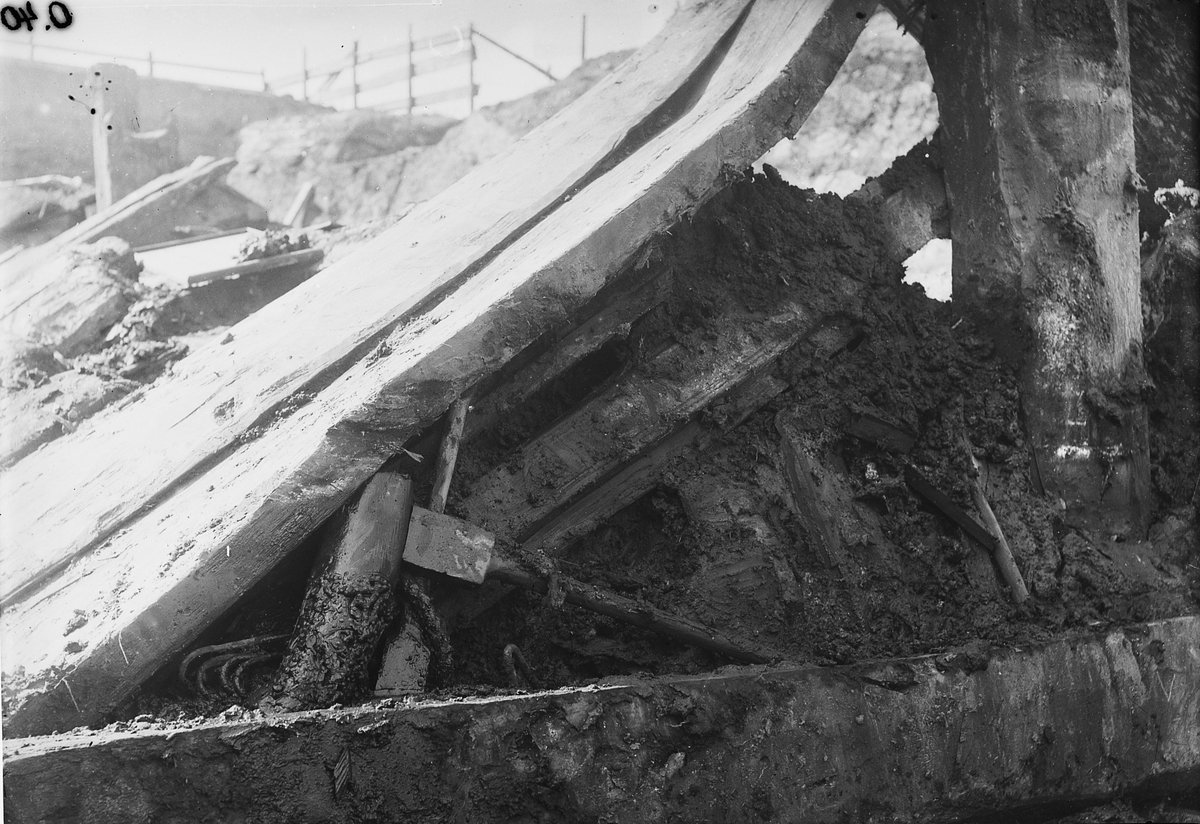
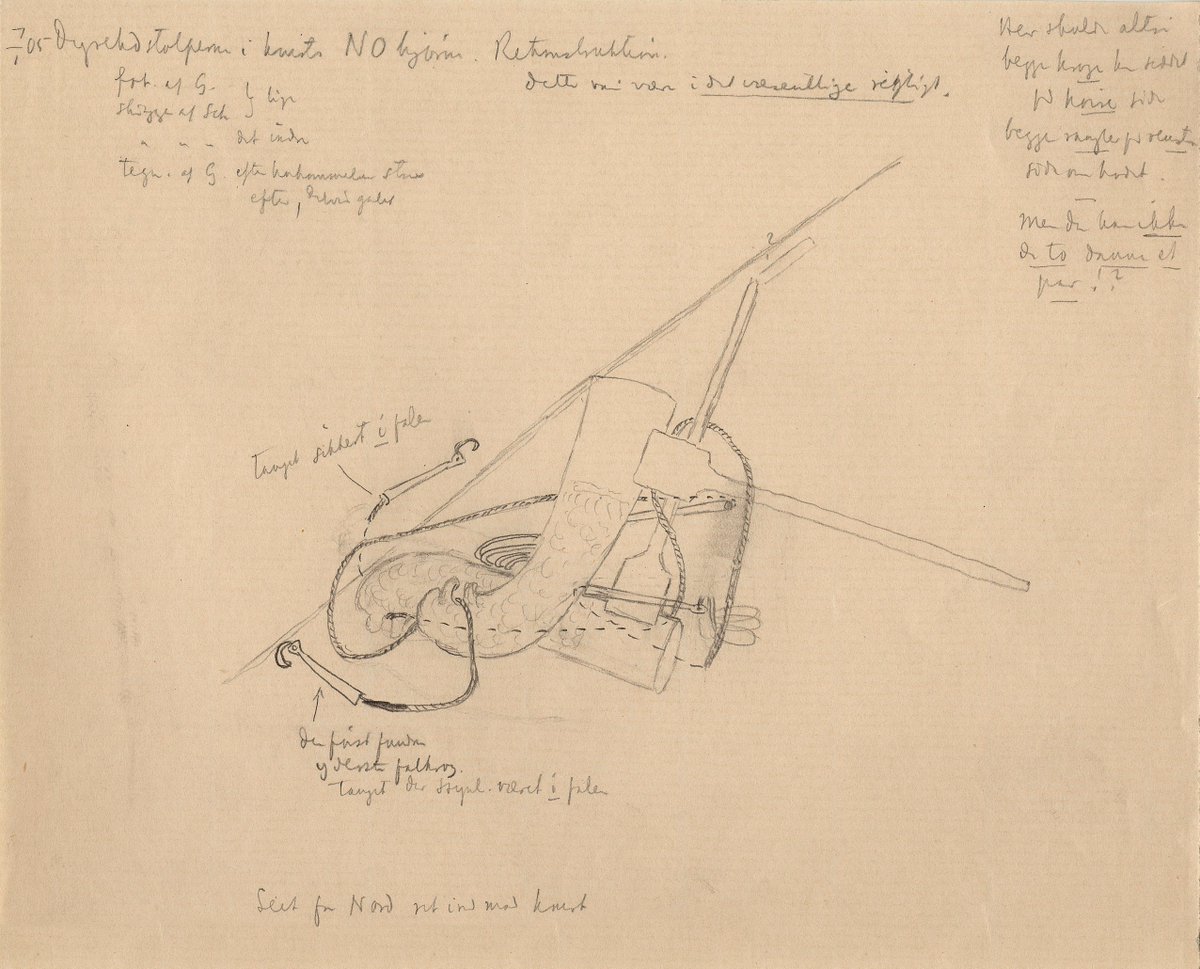
@Kulturhistorisk In another corner of the burial chamber, close to the mast of the ship, 'The Lions head' and 'The Carolingian' where found on top of one another. 


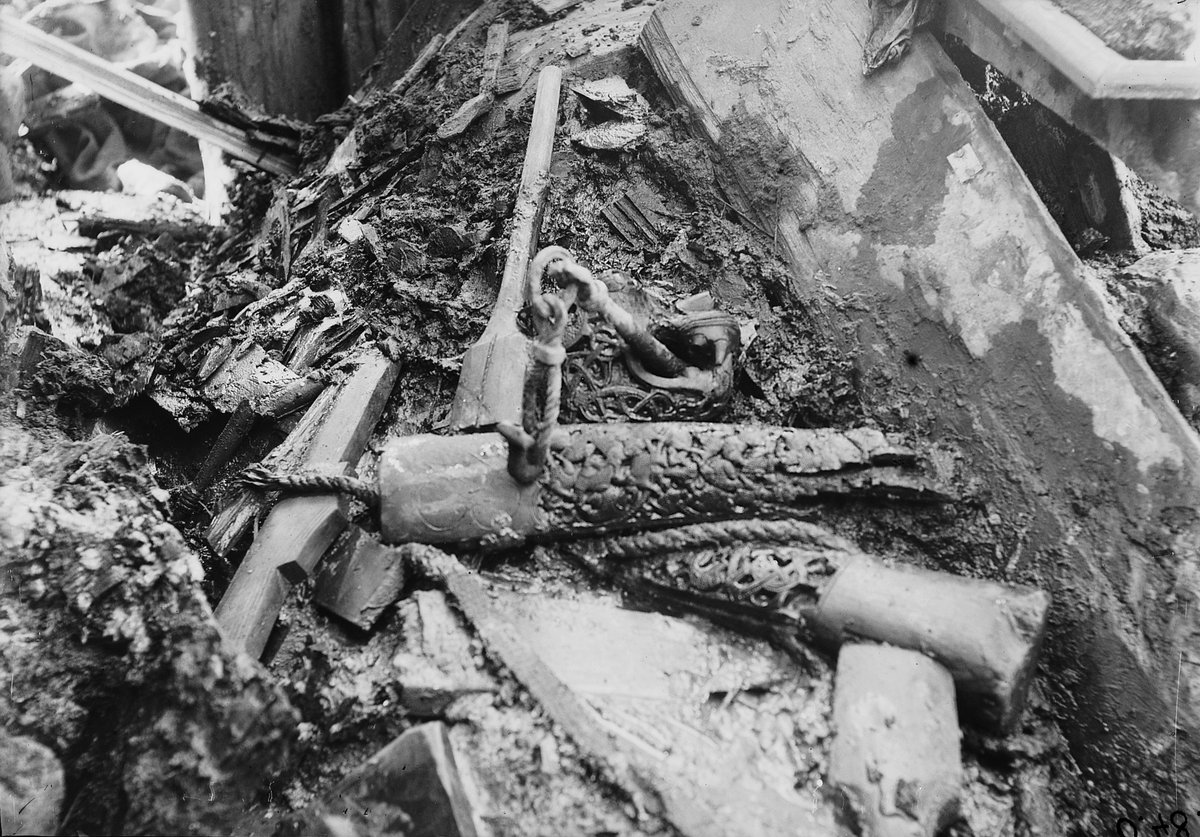
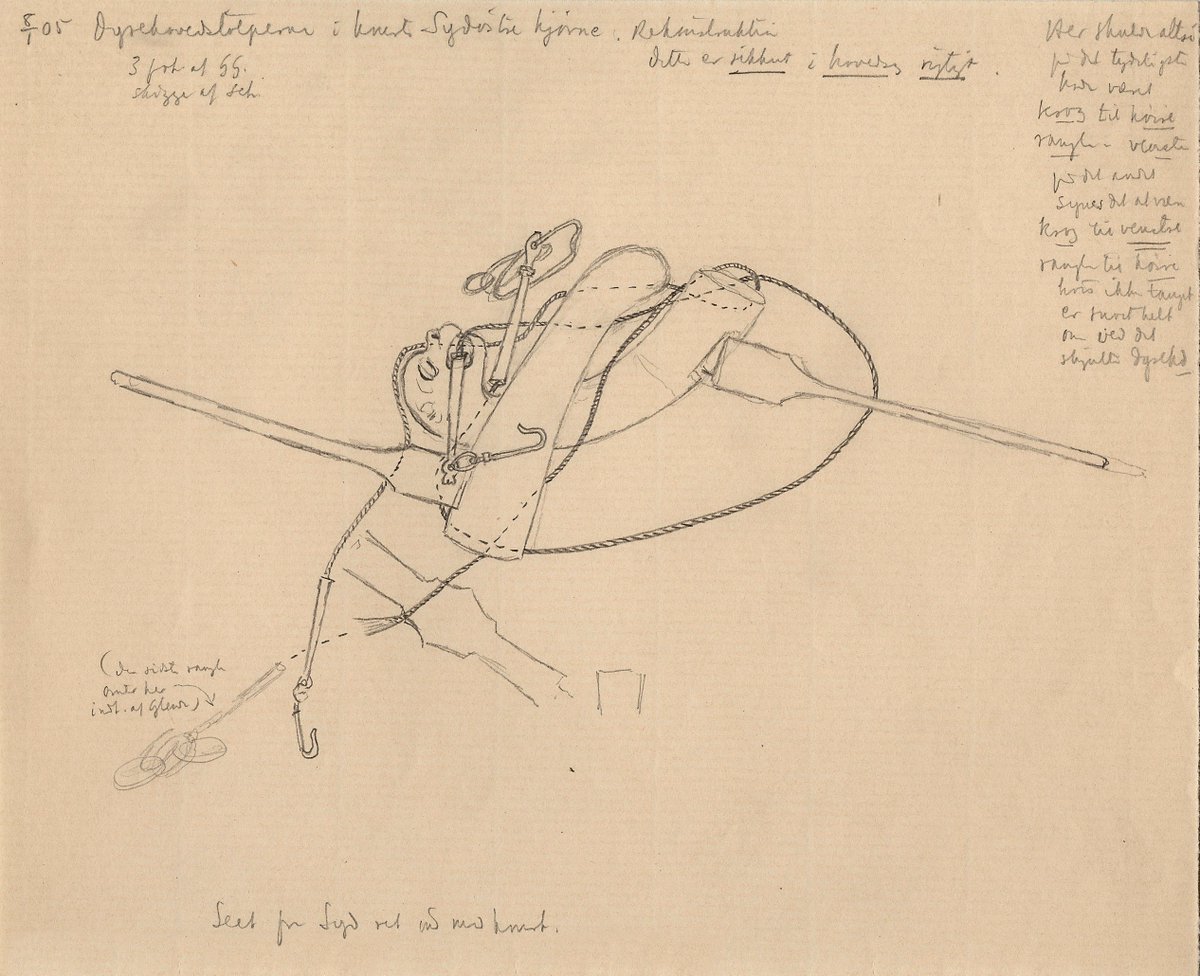
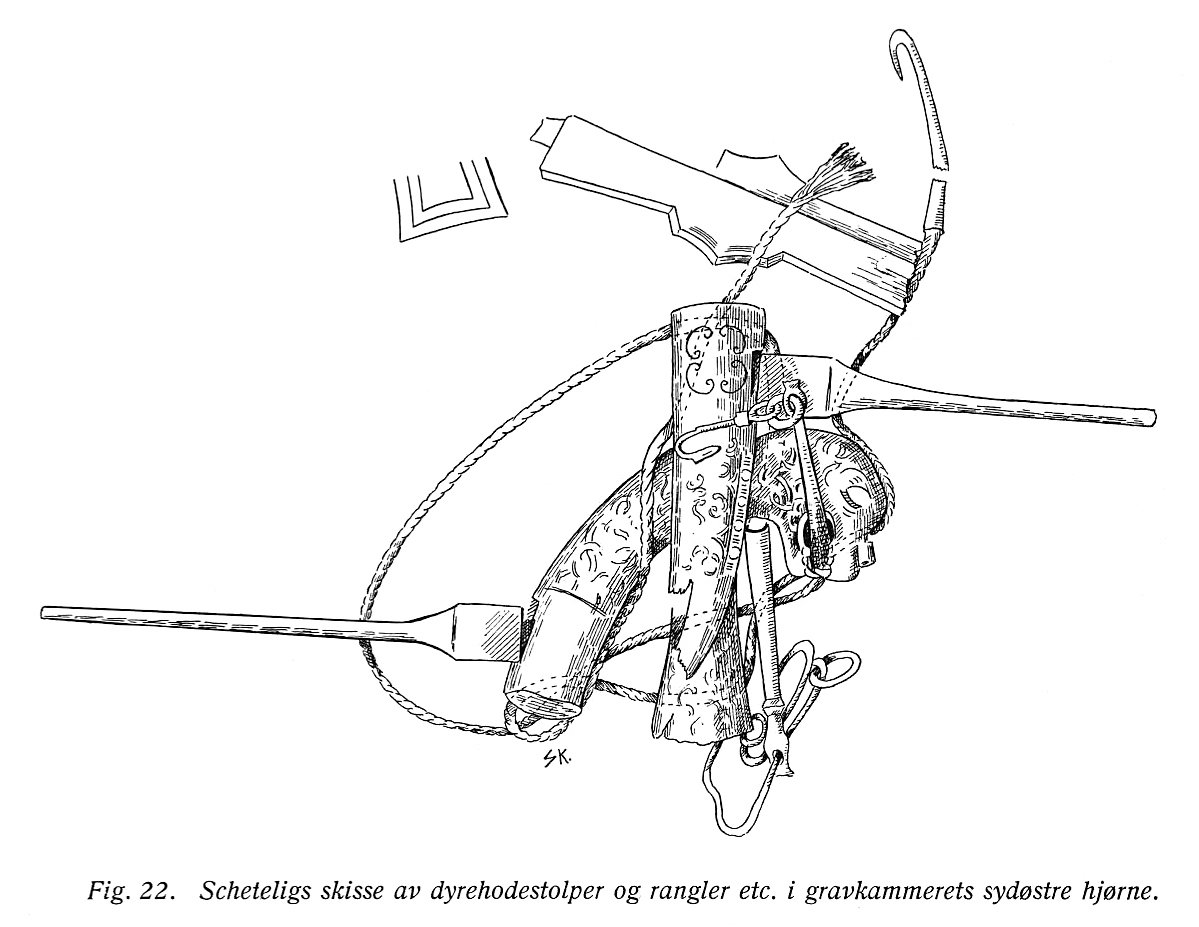
@Kulturhistorisk A fascinating aspect of the animal head posts is the rattles they where found with. This is the typology of #Viking Age rattles by Jan Petersen. These rattles are interlocking iron rings made to jingle like bells upon movement. 
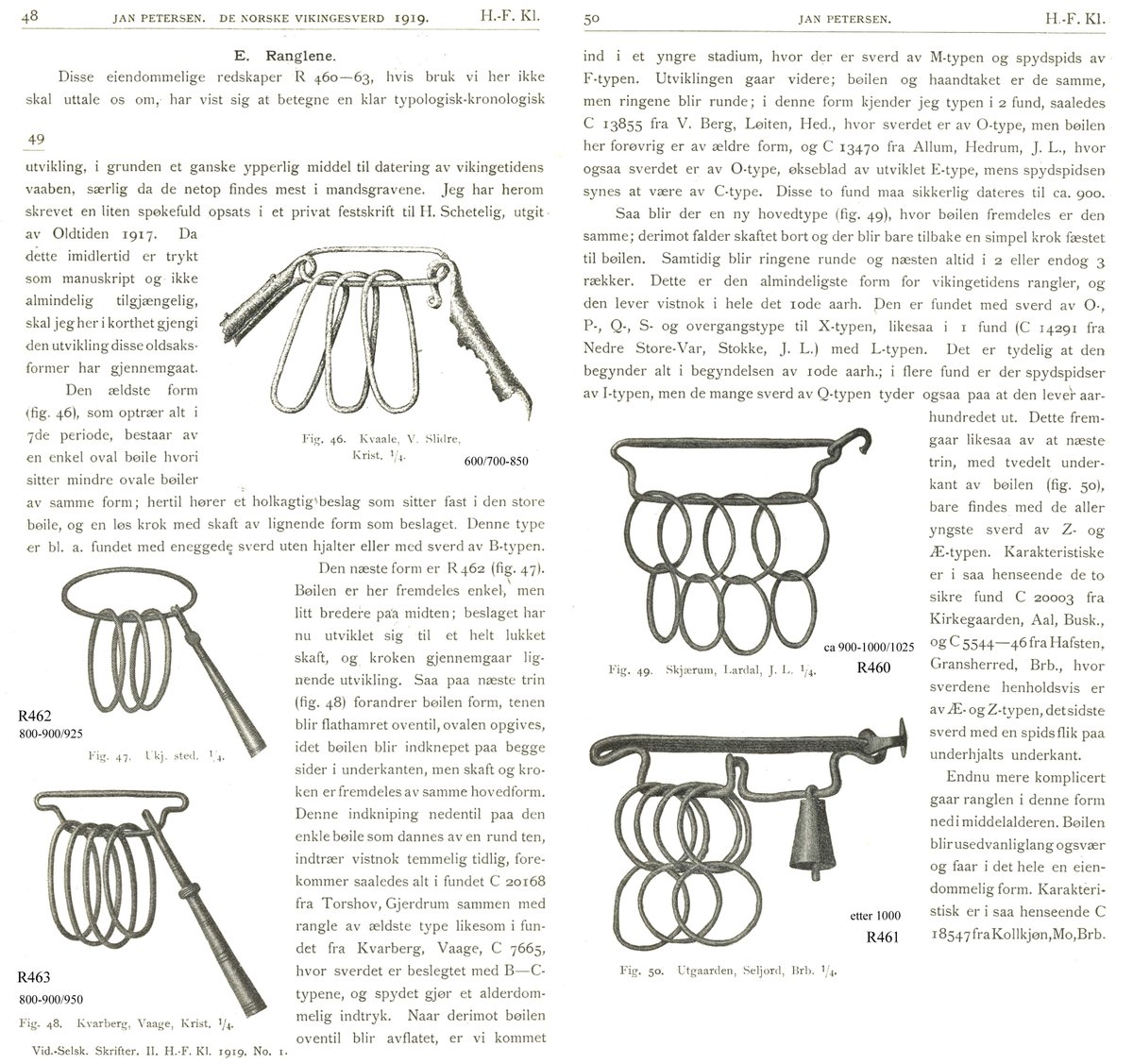
@Kulturhistorisk Rattles have been found in a few hundred Viking Age graves, often related to horse equipment. They can be compared to the jinglebells employed during traditional sleigh riding (norwegian: 'kanefart').
@Kulturhistorisk Depicted here is the finest of the Oseberg rattles. It's the most ostentatiously ornate one we have from the Viking Age. C55000/125 [1904 no. 139] @kulturhistorisk 


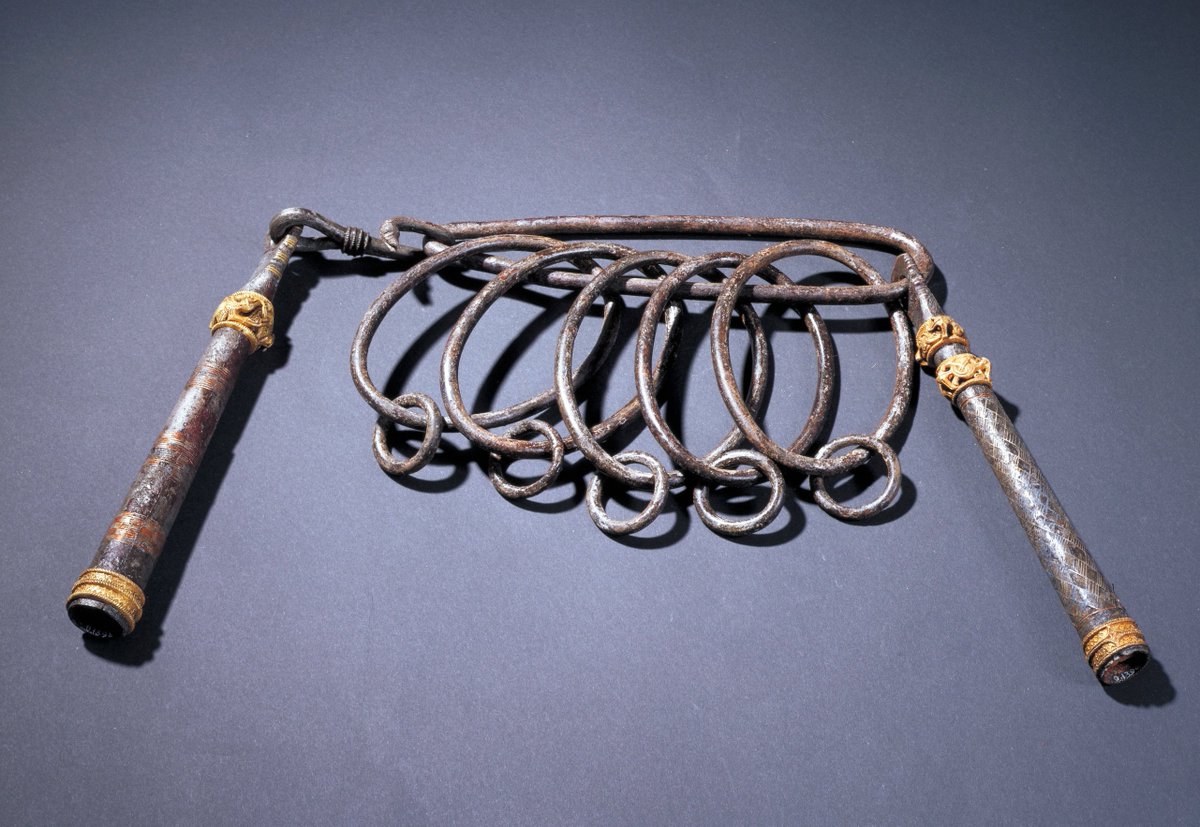
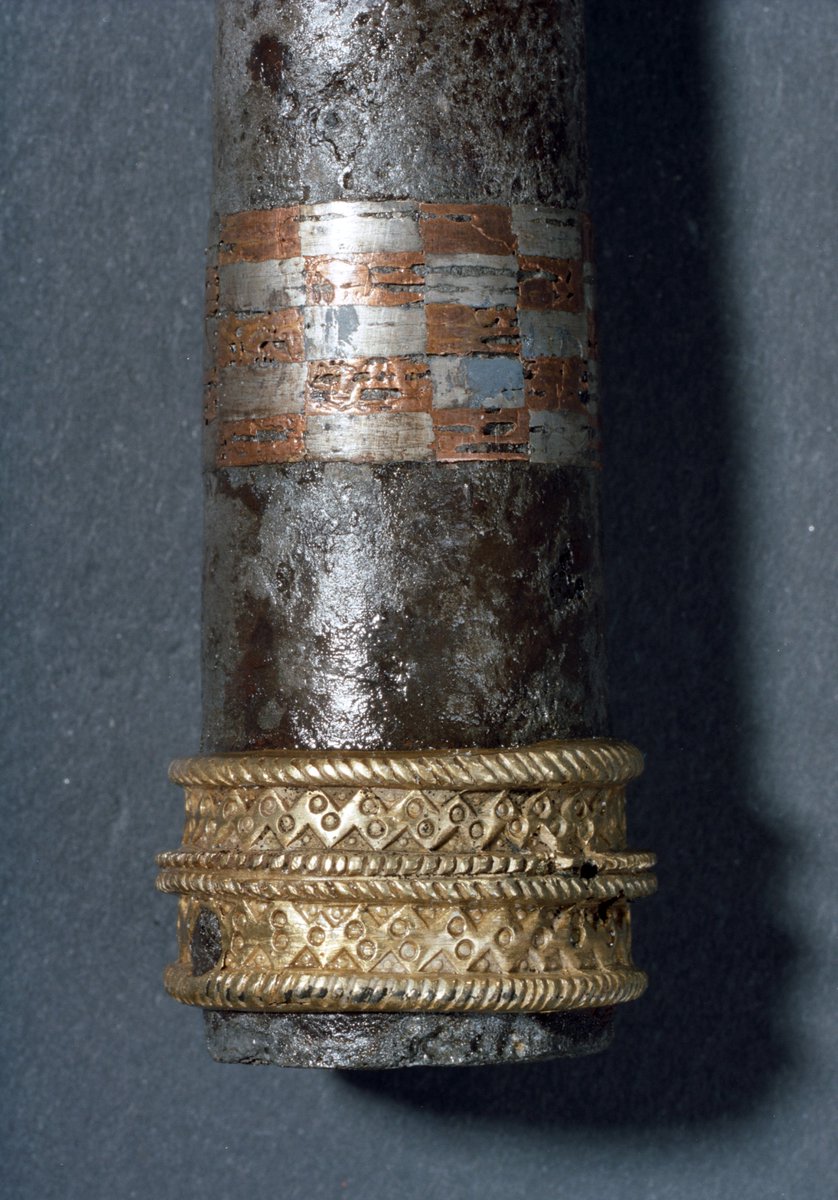
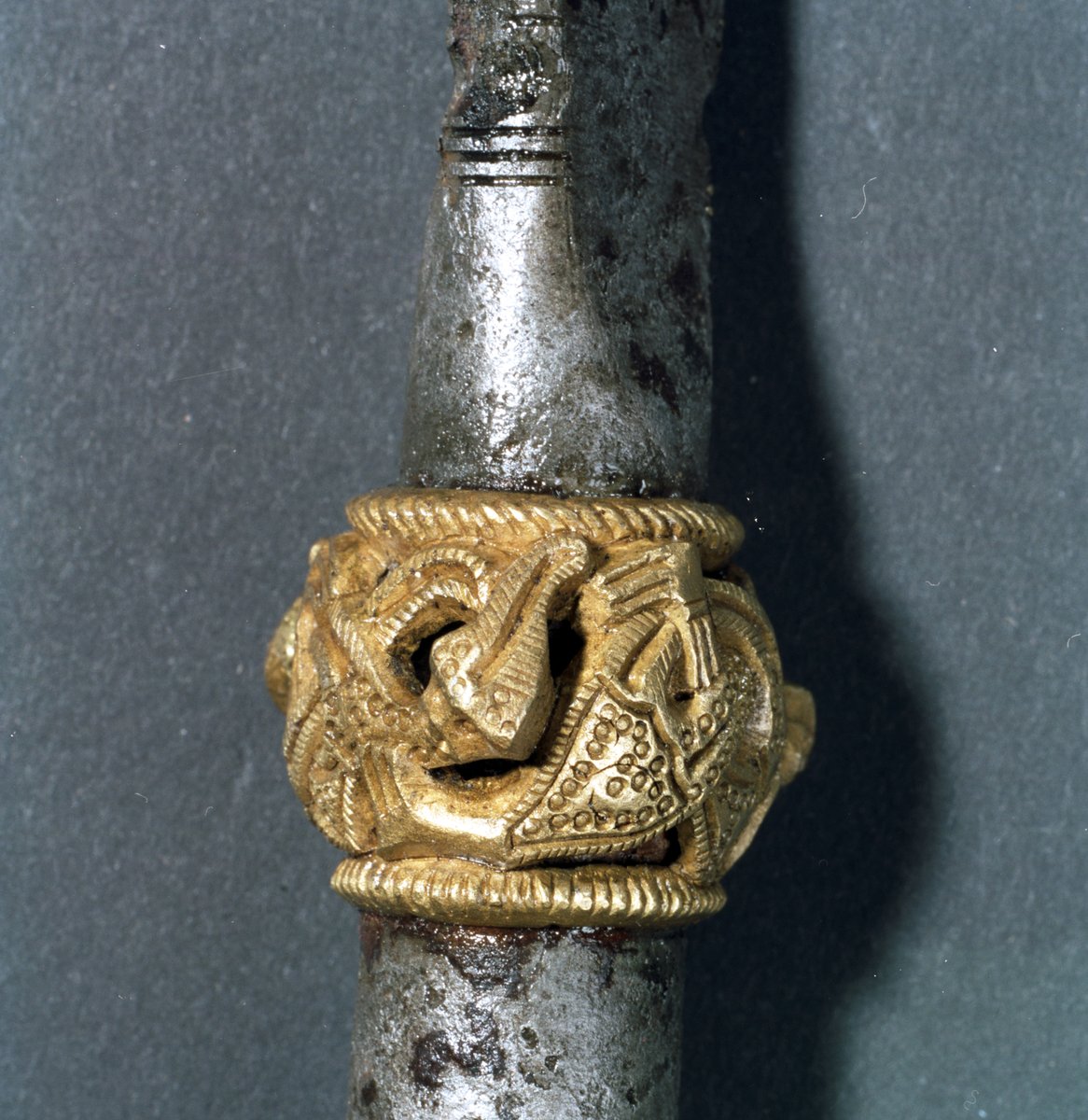
@Kulturhistorisk A few more details of the most fabulous rattle from Oseberg. It was found connected by rope to the now destroyed animal head post, The Baroque Master's second. 



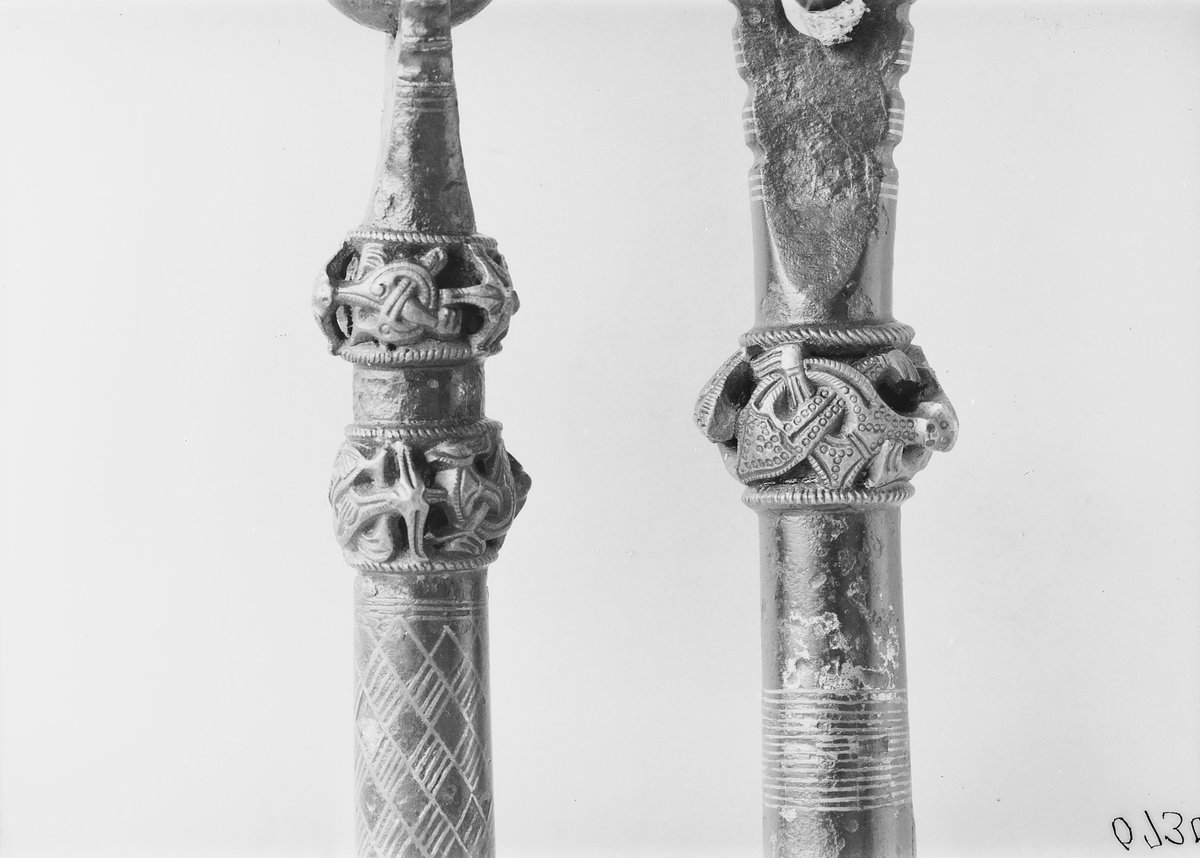
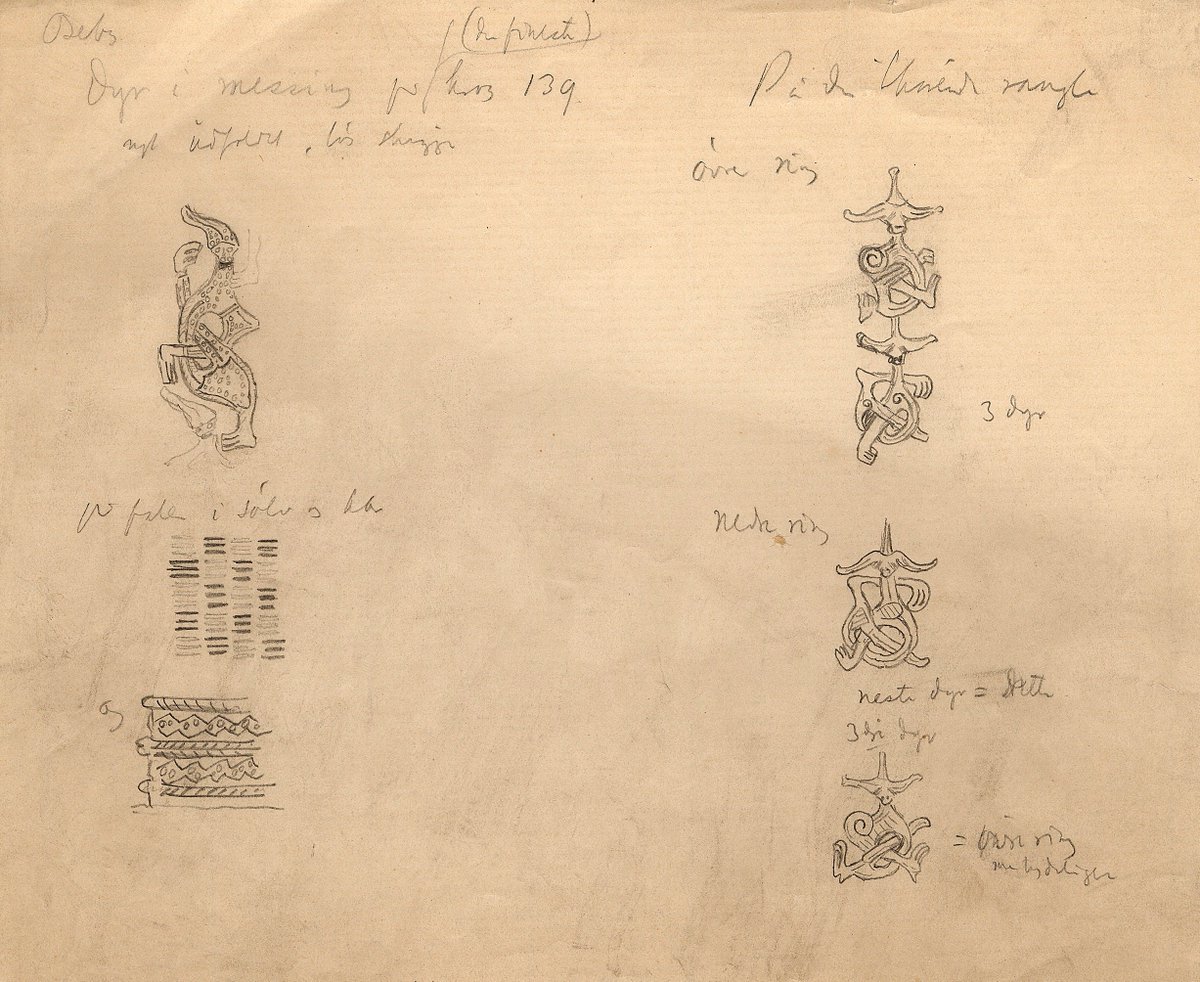
@Kulturhistorisk Five rattles where found in the Oseberg grave, the same number as the animal head posts. Each of them where associated with one of the heads. These are the four other rattles with a notation of the related head. 




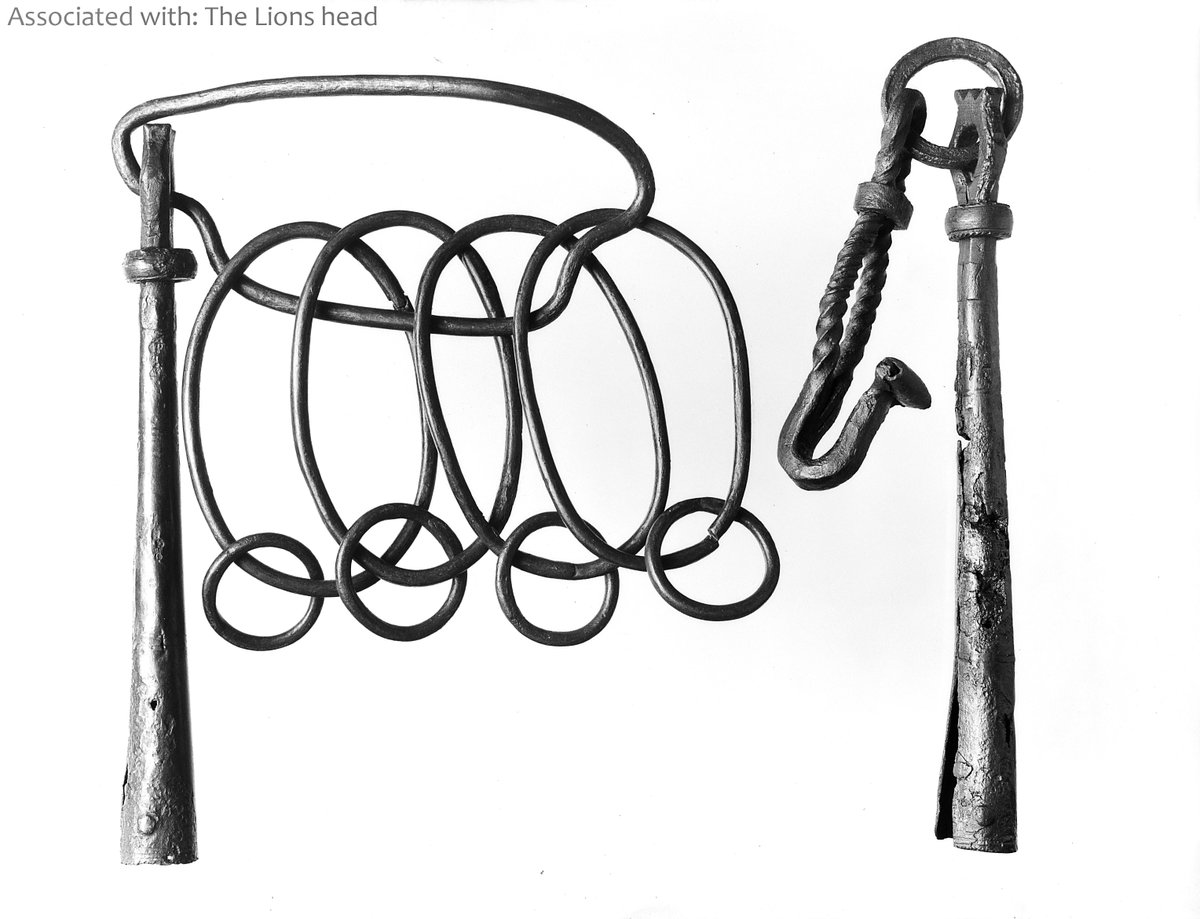
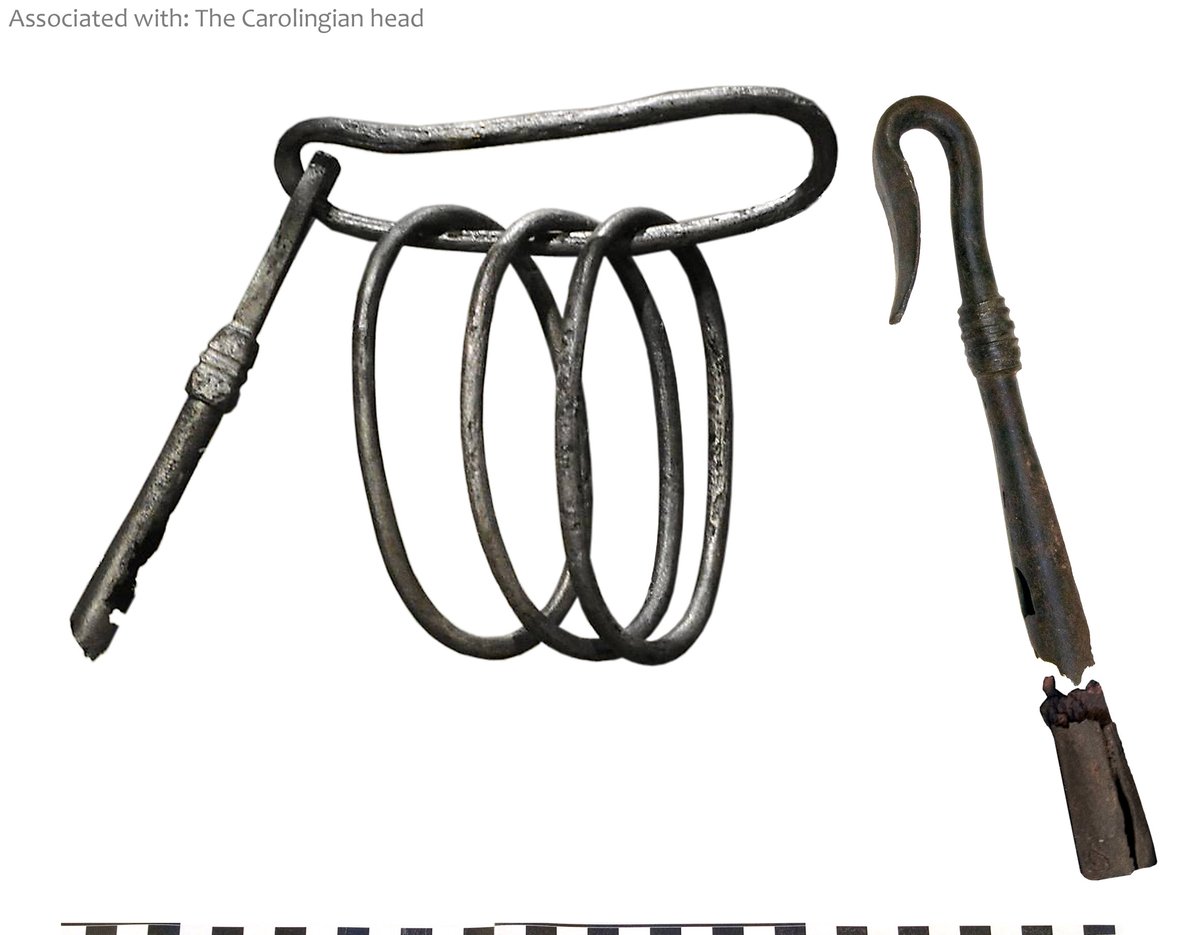
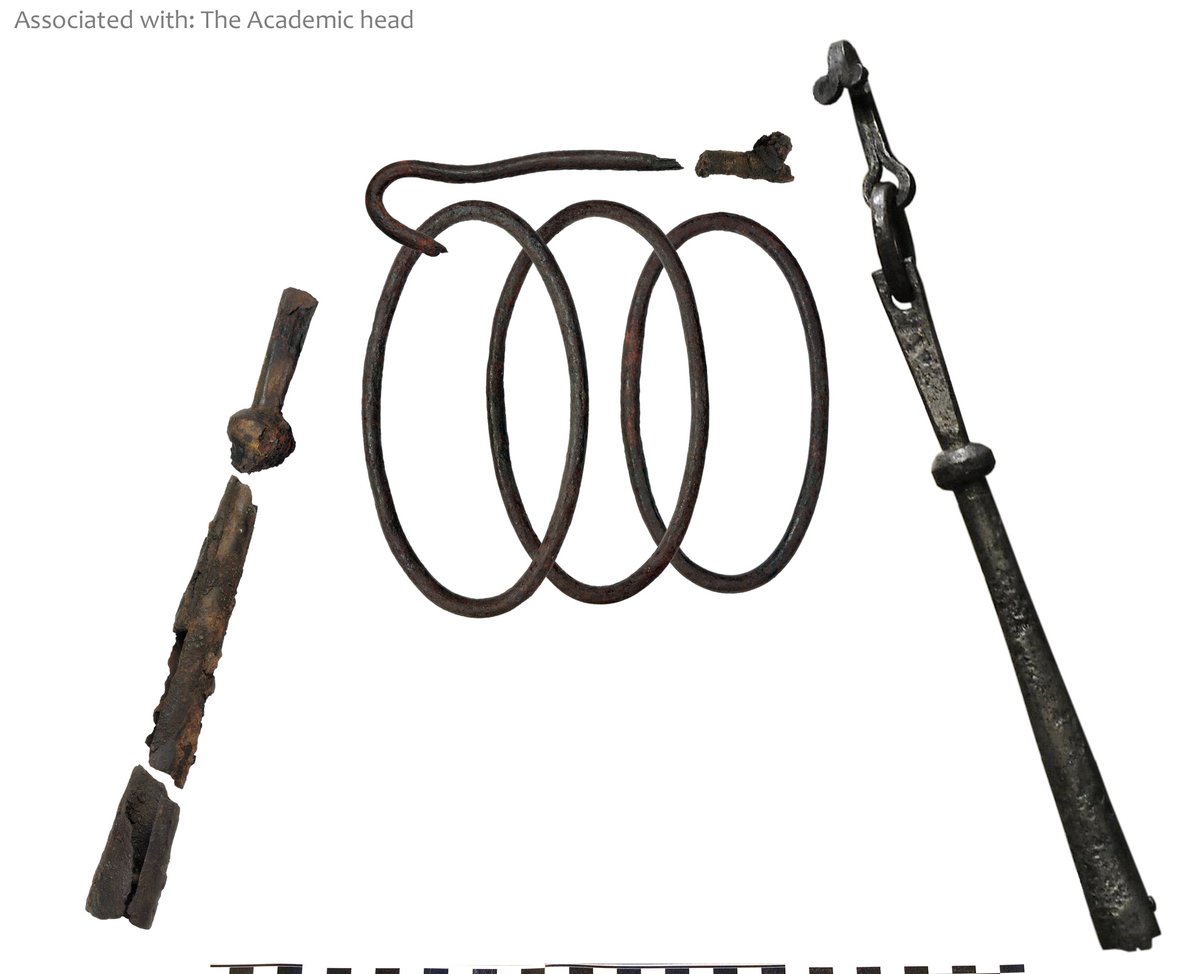
@Kulturhistorisk Each of the rattles was attached by a rope to its metal hook. In addition the rattle-rope passed through the mouth of the associated animal head post. 




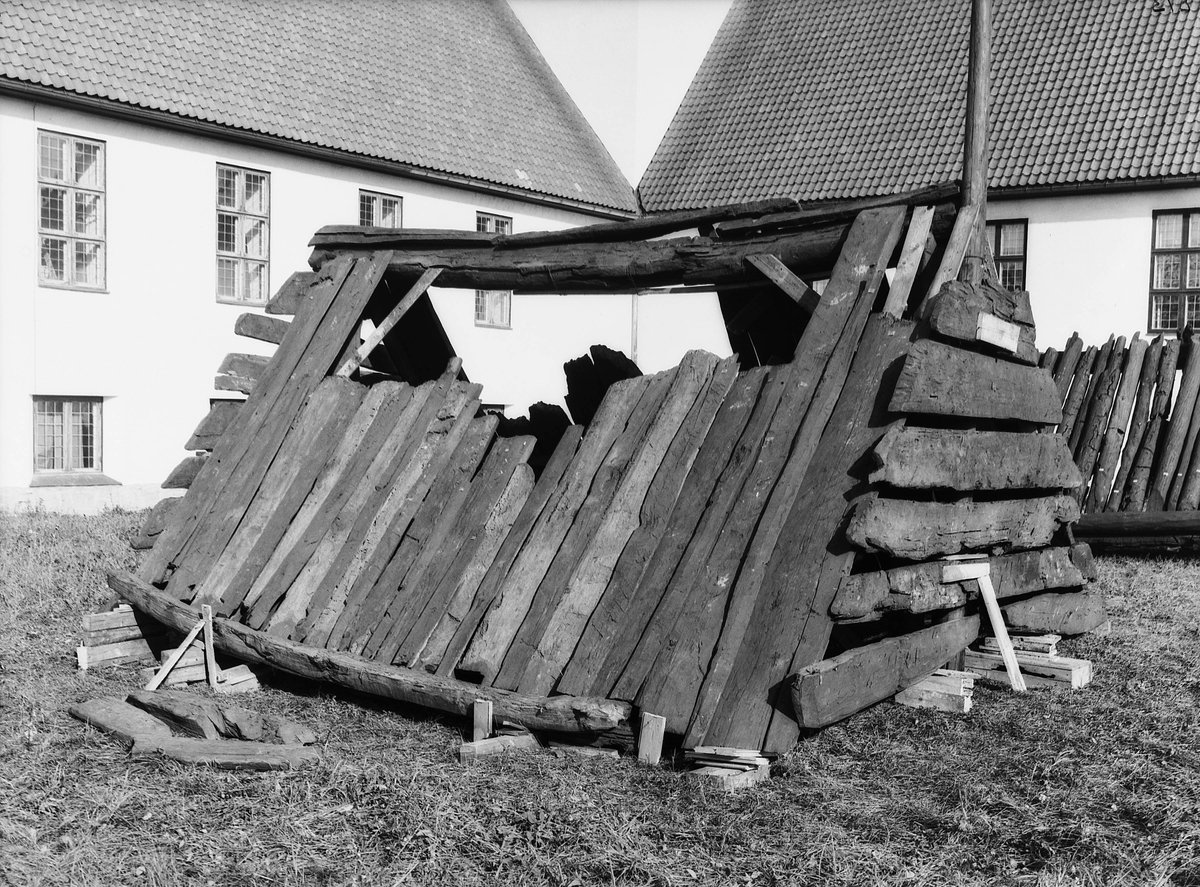
@Kulturhistorisk The Lions Head and The Carolingian where found in the grave with two complete rattle-ropes. These where noted by Gabriel Gustafson to be 172 and 175 cm long and approximately 2 cm thick. We still have one meter of rattle-rope preserved, found with the two Baroque heads. 
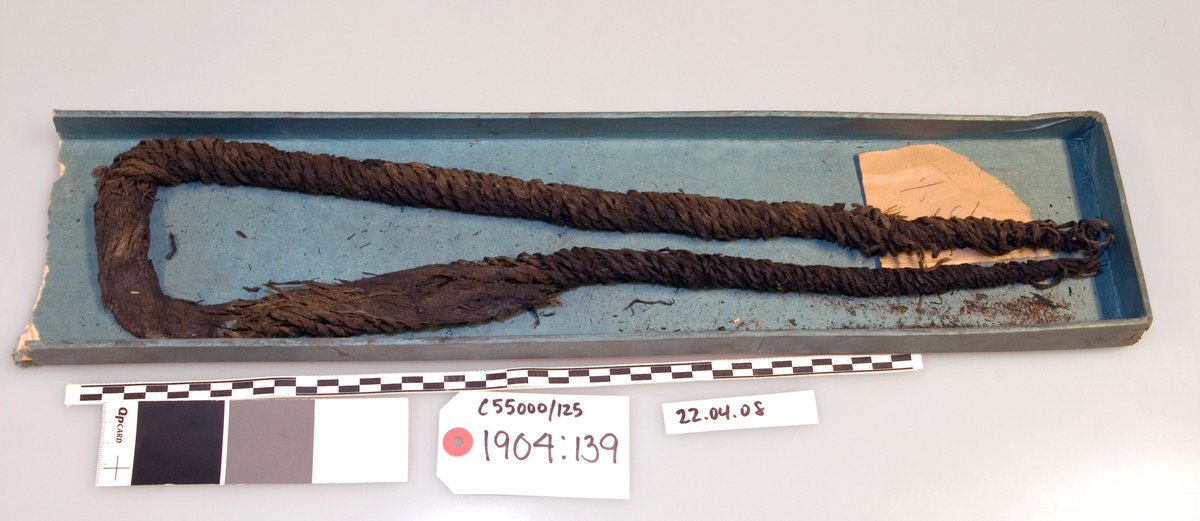
@Kulturhistorisk Haakon Shetelig and Gabriel Gustafson made reconstruction drawings already in 1905 where they proposed that the animal heads and rattles had been employed during the burial ritual as a protective fencing/barrier. 
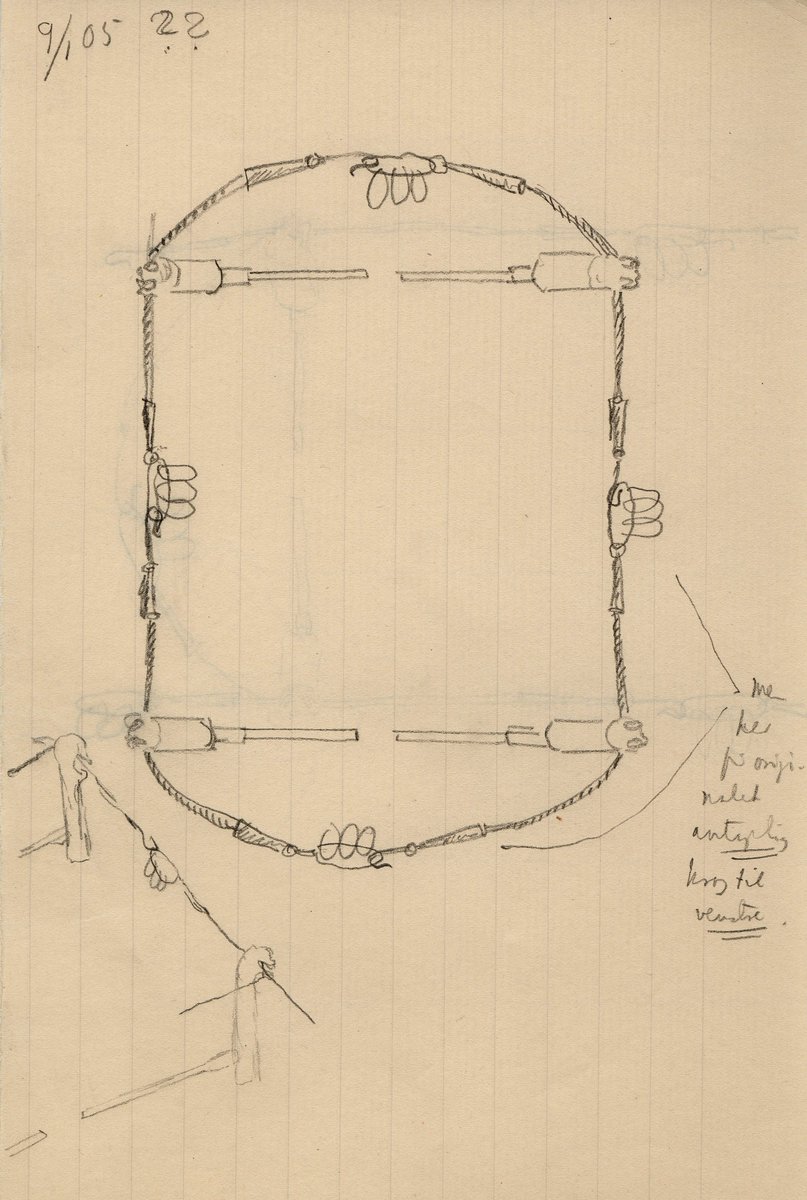
@Kulturhistorisk This is a picture of the archaeologists Haakon Shetelig (left) and Gabriel Gustafson (right) while taking lunch at the Oseberg dig in 1904. 
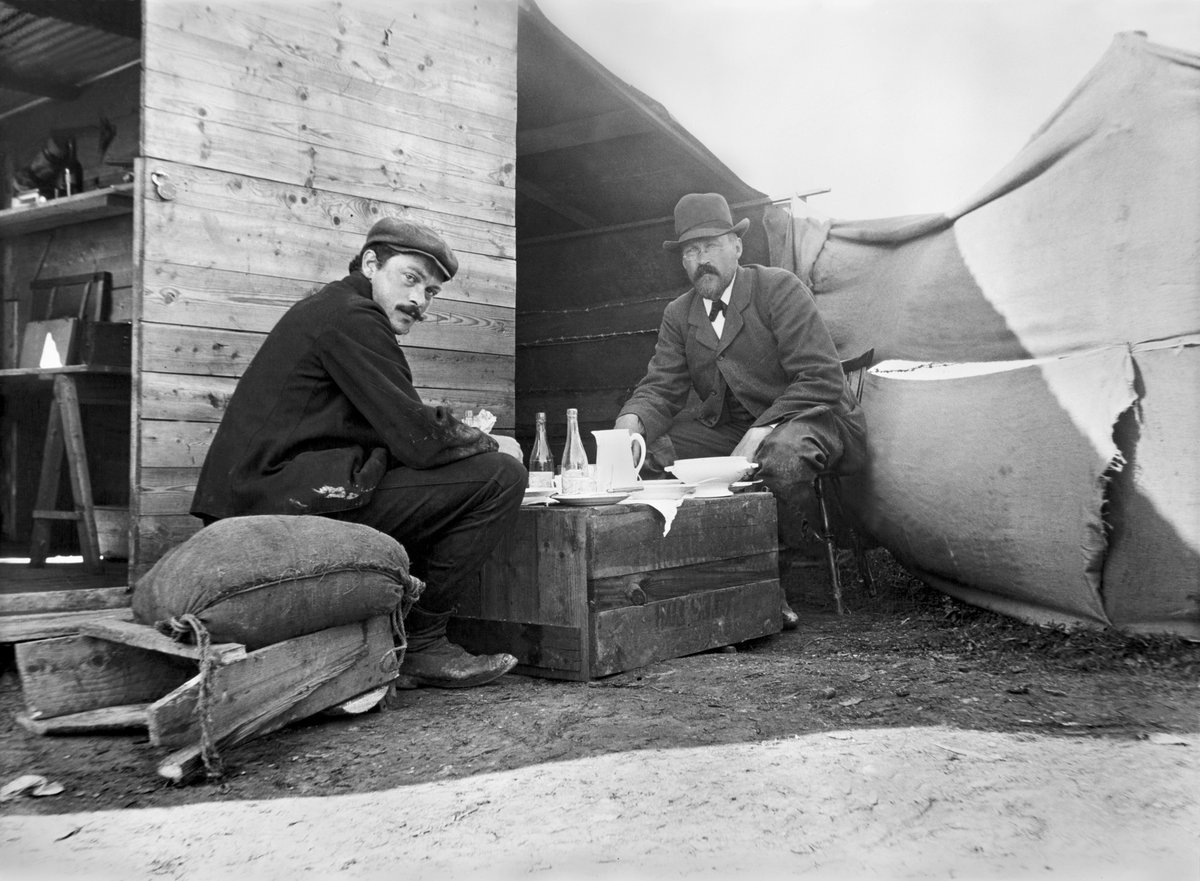
@Kulturhistorisk 'The Academic' is the fifth & last of the animal head posts. It was located on the forward deck of the ship & not with the other four inside the burial chamber. It was also found with a rattle & rope arrangement - the rope passing close to its open mouth.
unimus.no/foto/#/search?…



unimus.no/foto/#/search?…

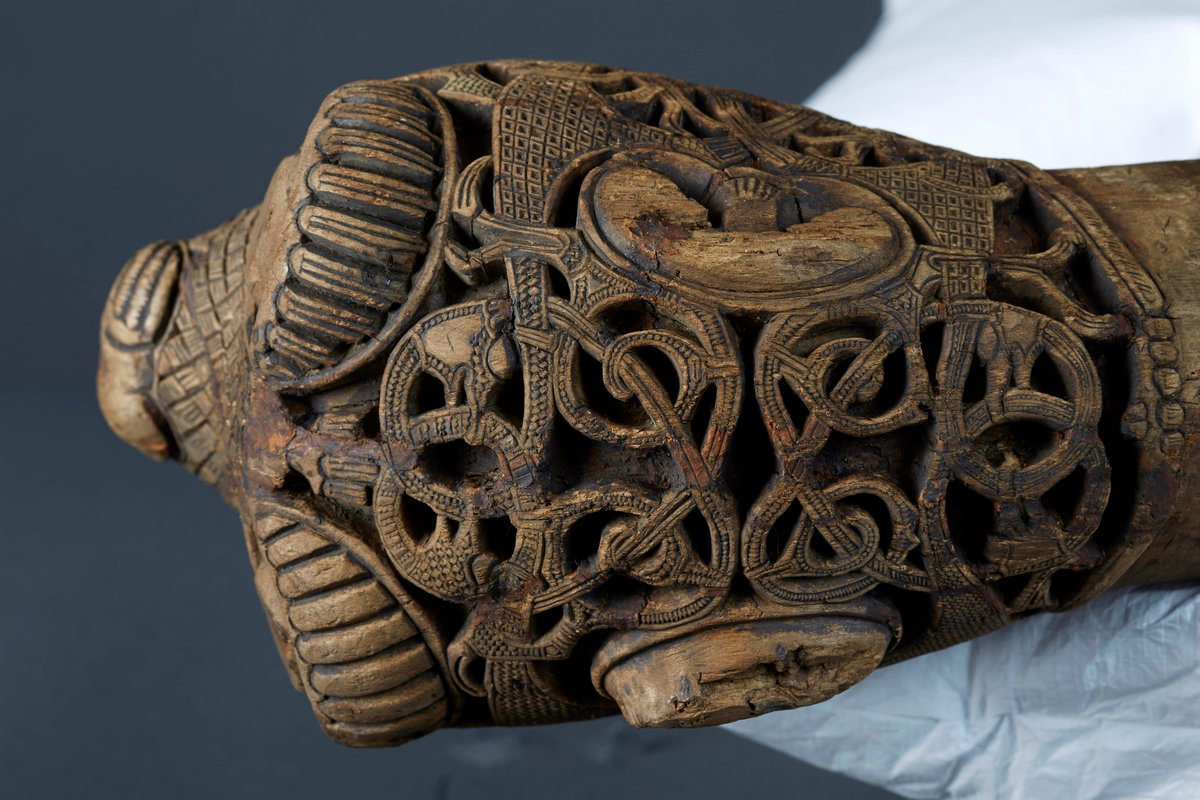
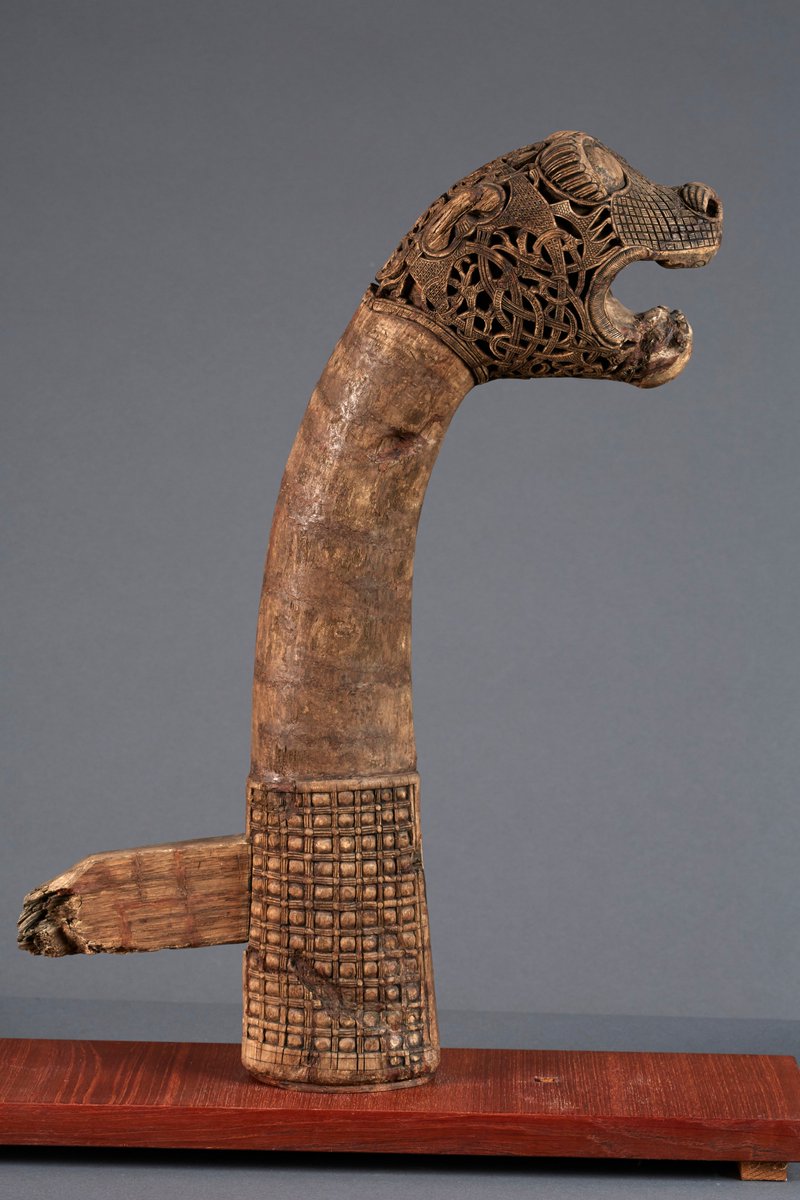
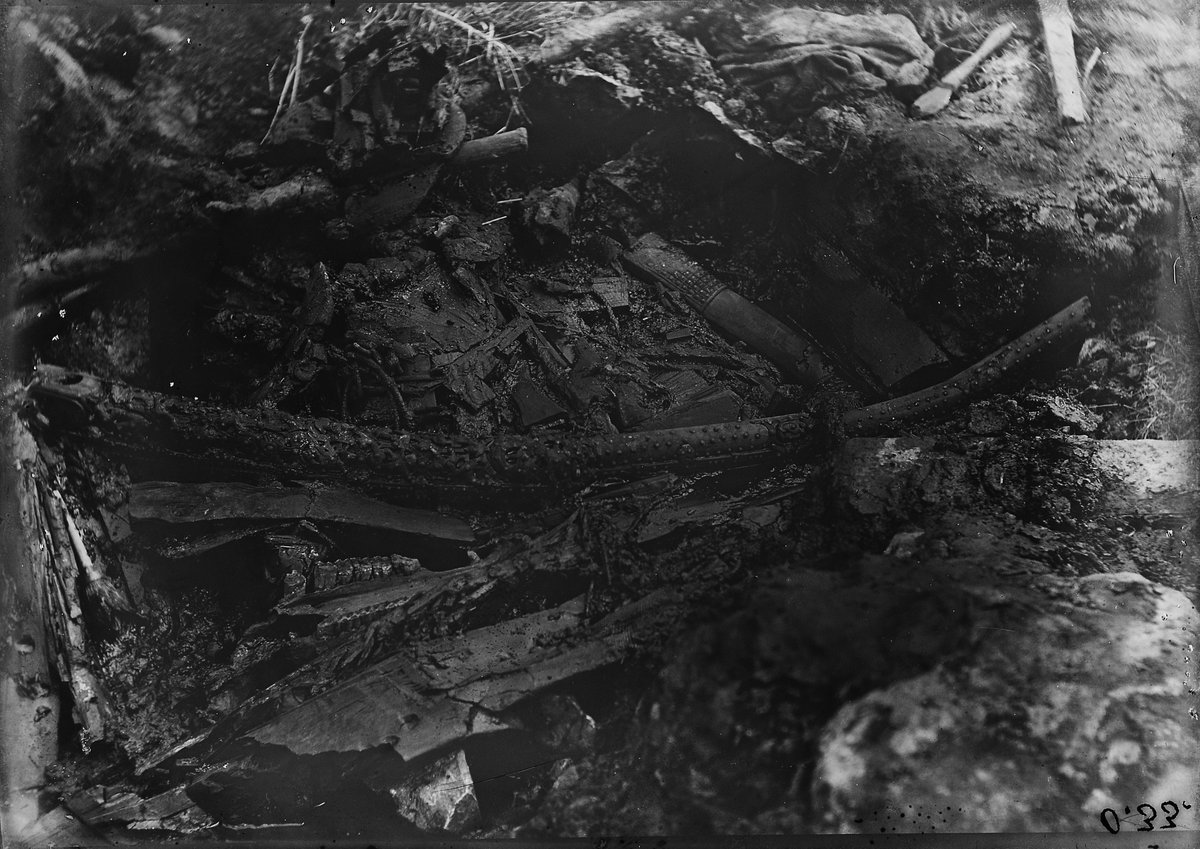
@Kulturhistorisk Many have speculated about the use and meaning of the animal head posts. The most important aspect is probably that both the animal heads and rattles could be viewed as having warding and protective powers against supernatural forces.
/ The End
/ The End
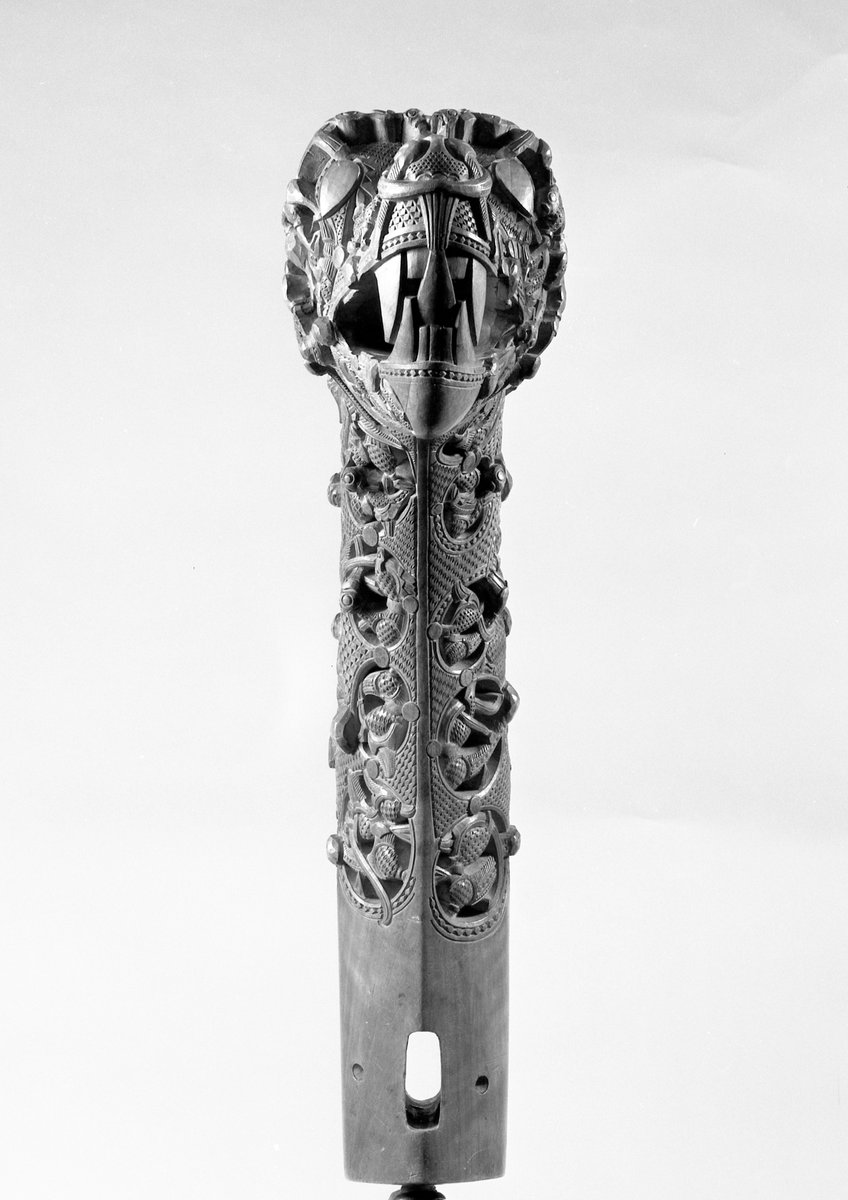
@Kulturhistorisk This is probably the most recent publication on the topic of the animal head posts and the rattles. doi.org/10.1017/S09597…
• • •
Missing some Tweet in this thread? You can try to
force a refresh

